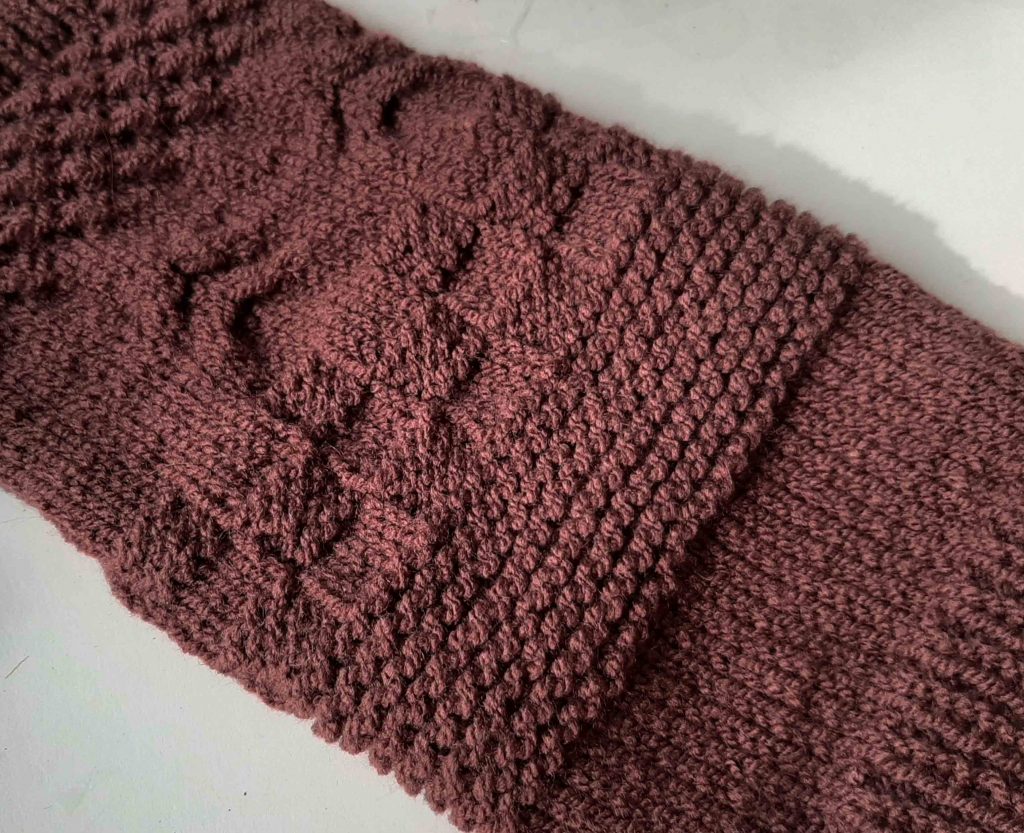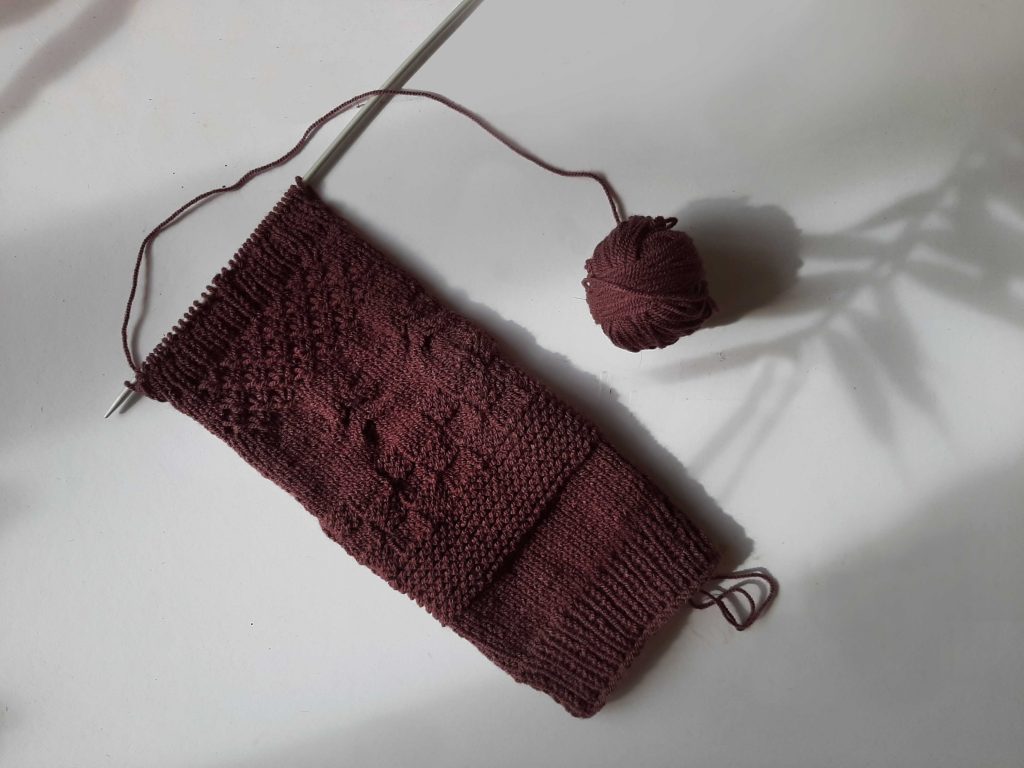To view the project, please visit this link:
p.s: Make sure the view of the prototype is on “Fit – Scale down to fit” from the options menu on the top right.
To view the project, please visit this link:
p.s: Make sure the view of the prototype is on “Fit – Scale down to fit” from the options menu on the top right.
“The more we become re-connected to land-to nature- the greater our sense of belonging to place thus restoring meaning to our cultural landscapes. Traditional knowledge rises above generalities through local specificities, and comprises a world-view that sees humans as integral to nature rather separate from it” (Design and Nature, 180).
At the beginning of this project, I sought to learn. To learn about how different individuals see their unique connections to nature and earth. A huge part of the climate crisis we face now is about care and the way we choose to practice that. In our daily life and in our practices as designers. But what does this care look like? How many forms and shapes it could have. This all started when we were talking in the class about our personal connections with nature. How we have personal and intimate stories embedded in those connections we have formed throughout the years to this land. So, here we are now, right in the middle of an ecological crisis, that threatens everything we love and cherish, and we feel powerless and we feel anxious. In this vast network of complex relationality, where do we stand?
Gifts:
I Grew up In a city filled with buildings and cars and few little snaps of natural elements. Growing up I saw nature as sacred. A space meant to be looked after. I thought of nature as a gift that is given to me in rare moments of encounter. That is how my connection to nature started. Every little piece of plant, flower, leaf, rain, a ray of light, and every breath of fresh air became precious to me. Something I saw as a gift. something I was supposed to cherish. Something that filled me with joy whenever I had it. All of these moments were like actual gifts to me. There was a story behind them and a deep emotional attachment to them. I still remember so many of them. Some of the best memories of my life are entangled with nature. That’s how my connection to the land was formed, and that is why I want to care for/with this earth. To care for those gifts, like you would for any other gifts received from your loved ones.
In the age of ecological crisis, I constantly contemplate and go back to those stories and gifts. I think that we are still lucky to be receiving these gifts. The earth has been resilient enough to survive through all we have done to it. We have thrown away, set fire, torn, and been ungrateful to its gifts. And that is how I see this crisis. An act of unappreciation.
When I think of where I want to start to carve a path towards sustainability, I think about appreciation. An appreciation for everything we have been / are being gifted.
The notes below are a collection of thoughts from a few of the cohort who were generous enough to share them with me. I asked them about connection and care; to the land we live on and to the earth we inhabit. I also asked them about environmental care and how they see that connection relating to the way they practice care. All of their answers amazed me. To see how people think and reflect on matters like this is truly amazing. Here I will share snippets of their notes.
Studio 2
Project II
Visualizations that depict natural elements are significant in our knowledge formation surrounding these topics. Nature is inherently quite complex, so nature’s data is complex as well. Although nature’s data could be quantitative and made up of numbers and degrees and variables, it could also be qualitative, personal, subjective, and open to more interpretations.
For this project, I wanted to explore different ways of looking at and visualizing nature’s data. Ways that do not rely only on documenting numbers, and creating charts, and graphs but are more personal and intuitive.
To have a more solid framework for my experiment, I wanted to have two stable elements and a fixed time frame. So, I chose to document the data from:
1- My new plant 2- Weather
I also chose a 1 week time period and the time of 8 am for the weather and 5 pm for my plant.
Everyone has a personal relationship with nature, and everyone communicates with it differently. That is probably because nature itself offers many ways of interaction. It doesn’t solely rely on color, sound, shape, or movement. It is a collection of all those things combined. So, forming relationships with nature is very subjective, and so is collecting and visualizing its data. We create these relationships based on the data we see, hear, feel and experience from nature. The way I observe and experience nature is completely different than the next person.
Moreover, we also know about climate change through the data that is collected about natural elements. We can speculate how much the temperature will rise, how deep our oceans are going to be, and how tree colors are going to shift.
So, even though we all communicate with nature in our way, when it comes to phenomena such as climate change, we don’t do that in the same way.
We see climate change in the form of generalized numbers and graphs. We see them as non-personal entities that stick to the rules of objectivity in scientific data. We wee a specific visual language that was drawn for us. A language that doesn’t allow us to form deeper and more meaningful relationships to it.
consequently, the images about nature that circulate in the public follow a representation according to the prevailing technical-scientific objectivity paradigm and have lost a lot of important information and value (Thierfelder, 2019).
Plant:
I got this plant recently. This is the first plant I have gotten since I moved here. When it comes to caring for plants, I am not inherently green-fingered. I have never been good at monitoring my plants and realizing when they need to be watered or taken care of. So I thought this activity was a great way of getting to know my plant more and establishing a fresh (!) relationship with them in general.
In her essay called “Thick description through visualizations towards new representations of nature”, Thierfelder talks about early artifacts of biological fieldwork as an interesting opportunity for designers to investigate design visuals. She mentions that those early hand-drawn sketches that documented researchers’ observations of nature could perhaps offer more insight into how we perceive nature rather than later finalized data that is created through the lens of objective scientific data.
Having that in mind, I started to document the data of my plant daily around 5 pm. I roughly sketched out the shape of the leaves, their pattern, and the height and width of new-comer leaves.
Here is how my plant changed/grew throughout the week.

After this exercise, I was actually quite surprised at how my plant had changed and grown. My visualization showed a lot more than just the layout and spacing of leaves and certainly conveys more information than what I would have gotten if I were to read a table of number associated with it. These could also reveal the human elements behind these data and the conditions in which I had gathered them. Some days, the light revealed more details about the plant, some days I felt more rushed and had to stick to more general variables.
Weather:
Weather is probably one of the most talked-about elements when it comes to climate change. How much is it going to get warmer? How much more wind are we going to have? How much rain are we going to have?
So, I decided to monitor and collect the data of weather from my bedroom window every day at 8 am.
The method I chose to document was rough paper sculpture. I wanted my visualizations to be intuitive and raw representations of how I experienced weather on that day.
I thought this raw data might give more insights into the process and the conditions of data collection and it could convey more emotions as they are more vivid and expressive. Here is the series:

When we talk about nature, everyone has their own unique connection to plants, trees, oceans, and animals. But when we talk about climate change, which is directly related to nature and our relationship with it, no one has a personal relationship with it. People’s connection with climate change is generic, distant, and somewhat vague. This is certainly understandable. We don’t know and even don’t want to form a relationship with it, maybe because it seems too daunting and unappealing. But can we let that connection stay distant and impersonal forever?
Data and visualizations are a significant step of our knowledge generation on topics relating to nature. In science, a specific visual language is created that represents nature to its audience. (Thierfelder, 2019). These visuals then define how we perceive and understand nature. So how can we create alternate ways of visualizing that can shift the way we perceive nature from our dominant paradigms? How we see nature’s visual representation directly influences our behavior towards nature.
In project 1, I set out to discover climate change impacts on a smaller scale; starting with getting to know my neighborhood and my surroundings and how all these elements will be impacted by it. Collecting those seashells and discovering them lead me to questions about re-establishing ties with our natural environment. Can we foster more care and sensitivity towards nature by not seeing it as a separate entity but as a significant part of our daily lives that we interact with?
After I finished my visualizations, I wanted to go back and place the shells that I had gathered back on the beach. The day I had collected them I had seen a lot of kids who were playing on the beach picking things on the beach and playing with them, so I decided to write something on the seashells before I put them back.
I thought about ways on how we can talk to kids about climate change. I did not want to write about dark predictions and overwhelming conversation about the future of the planet for my shell messages, but rather use it as a simple exercise for kids to take more notice of the nature around them and establish a caring relationship towards nature. The goal should be to connect kids to a world larger than themselves. Re-establishing and fostering a new kind of relationship with our non-human environment is a big step forward to how we view nature and probably we could address climate change.
I created a simple 10 step storyline that had small facts about life and the importance of shells(from the perspective of the shell) and I wrote them in the shells before I put them back on the beach. I numbered the shells as a way to encourage kids to find the next shell!
Here is the complete story:
1- Hi, My name is Nuttallia obscurata, but you can call me Varnish clam.
2- I originally used to live in Japan, Korea, and China.
3- I first came to Canada 120 years ago on a ship.
4- I am very easy to identify because of my purple coloring.
5- I can live up to 6 years in nature.
6- I am very important in the marine food chain.
7- I provide homes for many animals such as small fishes.
8- Many birds use me to build nests for themselves.
9- You can protect me by taking care of your surrounding nature.
10- Leave me back on the beach for other kids to know me too!
Studio II
Project 1
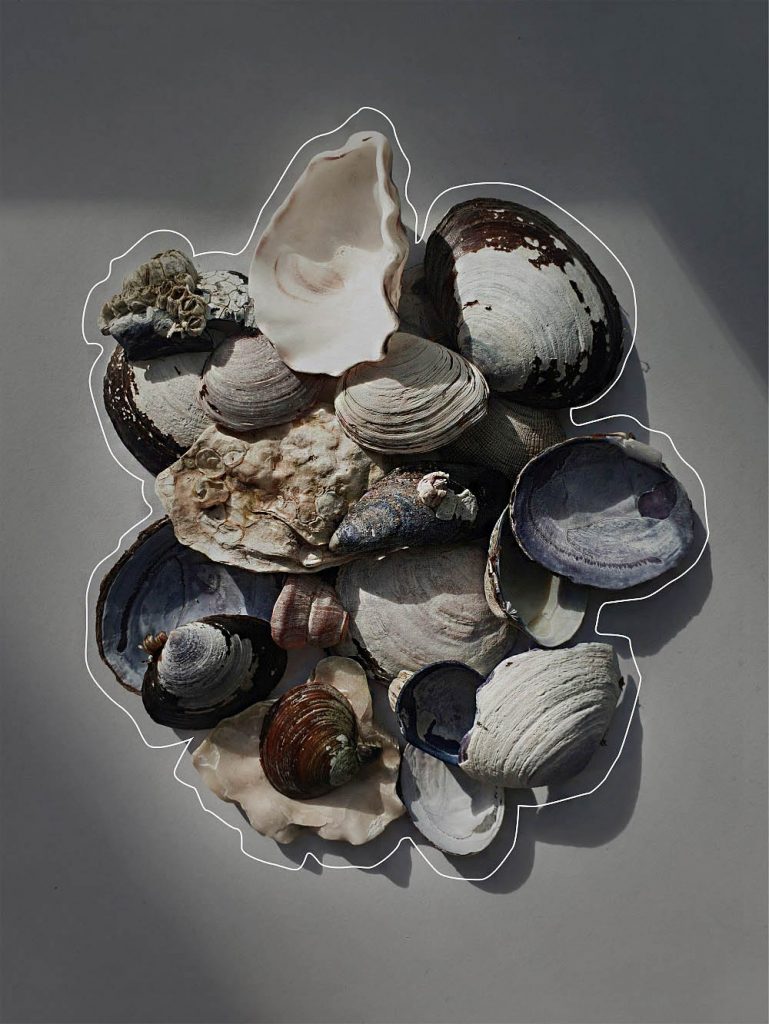
“When confronting challenging ecological crises such as global warming, it is essential to rethink our human-nature relationship. By providing better images of nature, the scope of human action could be triggered.” (Design and nature, 68)
Climate change is typically depicted as a far ahead phenomenon in catastrophic illustrations like the planet on fire and melting glaciers. When we see these images, it’s hard to feel close to the impacts of this disaster. They are out of touch and unfamiliar to many of us. These high scale images make it difficult to feel a part of climate change and to feel responsible for our actions.
So for this project, I started thinking about the scope and the scale of climate change. Although climate change is a highly relational and large-scale issue, maybe taking smaller steps within local ecologies can have more positive impacts. It can raise more awareness and build communities. But could this approach diminish the broader circumstances of climate change that are operating on a global scale?
Still contemplating this approach, I decided to take a walk around my neighborhood where I have been living for the past couple of weeks. Vancouver is quite unique in its environment, it’s even called the land of a million microclimates. It has thousands of kilometers in coastlines, mountains, desert planes, and ancient rainforests and ice fields. The shore here has rare marine ecosystems and more than 2/3 of Canada’s wildlife lives here. (2050 degrees of change podcast). This city has an astounding amount of natural diversity and compared to where I have come from, it’s a whole another world. That is why this city also becomes a great place to see more closely the impacts of climate change.
When I was walking around the neighborhood, I started noticing my natural surrounding more and more. Every species of flora and fauna surprised me. That day, I also headed to the beach where I had been spending many afternoons at. There, I decided to start gathering and taking a closer look at all the things that could be impacted by climate change. The first thing I noticed was a large number of purple seashells on the beach that kids were playing with. Then I noticed the seaweed brought by the ocean to the coast and then the sand the area trees as well. I started taking pictures of all these elements.
All these elements in one place had a story to tell, a story that I was not familiar with. How nature moves around, takes place, changes color, texture, and smells are all part of that story. But how will that story change with the impact of climate change? Are we trying to listen to those stories and change our actions too?
In an effort to expand my knowledge around the flora and the fauna of our environment, I set out to study the things I had taken a picture/collected more closely. How much do we really know about it and how much do we care? Can more knowledge of nature create more care and sensitivity towards nature/environment?
The route I took that day to the beach was a 15 min walk from my home, along which I saw and captured many natural elements. When I got back home, I was surprised by all the significant impacts climate change has on even this 15 min short walk. One of the most significant changes was the impact of high CO2 levels on seashells. Seashells are an integral part of marine life and the food chain. High CO2 levels cause the water to become acidic and dissolve the seashells. This endangers the animals that live within them and ultimately disrupt the life of many species of birds and fish.
I started studying the color, texture, and shapes of these elements that I had brought with me. They all had the most fascinating patterns that I had ever seen. I started mapping out their patterns, and ultimately how they would disappear due to climate change. Here is the series of images I created:
Action 11 | Grad Studio I

For this last action, I thought about ways I could celebrate all my actions at once, something that wraps up this semester quite nicely. But the pressure of making one conclusive action was too much. The fact is, this does not feel like the end, so I can’t make a conclusion about something I feel like has just started. So, I decided to make something just for the sake of making and having fun! No intentions and goals behind it.
I went through all my actions in my head and thought about the ones I had the most fun doing, the one the brought me more joy! Ironically, “joy” has been a big part of this semester. If you draw a mind map of all the words there were used in our classes, joy is a really big word. I was skeptical about it at first. I thought to myself, what does joy have to do with such a messed up world. As I went through the semester, I slowly started to realize the power of joy, and thanks to Garima and her workshop on “How to joy”, I decided to do this activity in the spirit of practicing joy and play!
Looking back, I experienced joy in all my actions. I had joy when in action one, I got to meet and know someone from thousands of kilometers away despite my anxiety about meeting new people. I had joy when I was making a video sketch with Zahra and her cat got in the shots every chance he could. I had joy when I was knitting with my friends in the freezing cold weather on the roof, and I had joy when I was sitting behind the laptop for hours creating my digital forms.
But out of all those moments, the ones where I was making and creating freely with my hands stand out more. I re-discovered the joy of crafting in this studio. The slowness of it, its calmness, and its capacity for allowing more thought. This is something I did not think was going to be a part of my graduate studies, but here I am, quite sure that I want crafts to have a big role in my final project.
So, in the spirit of making without intention, I decided to do the first thing that came to my mind. I gathered a bunch of fruit peels throughout the week, and I started exploring their different qualities by making. I cut them, dried them, made powder out of them, boiled them, made a paste, put them in the oven, burnt them, and…. Some results were successful, some were a huge fail!
Here is a series of pictures from what I have done ( I did not photograph all of them).
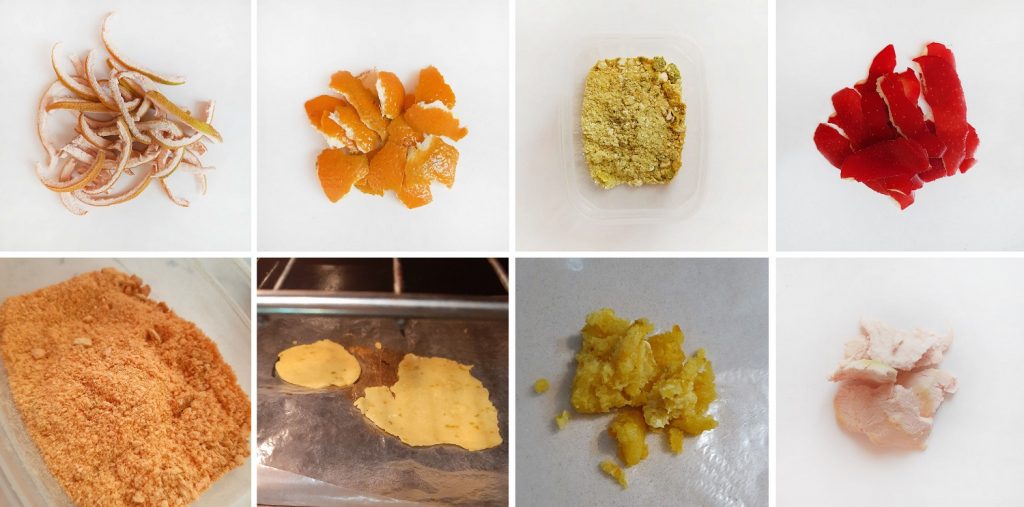
In the end, I incorporated all the things I had made into recycled paper. I wanted to explore the different types of textures and results I could create with them. Here are the ones that worked and didn’t crumble into pieces as I tried to pick them up!
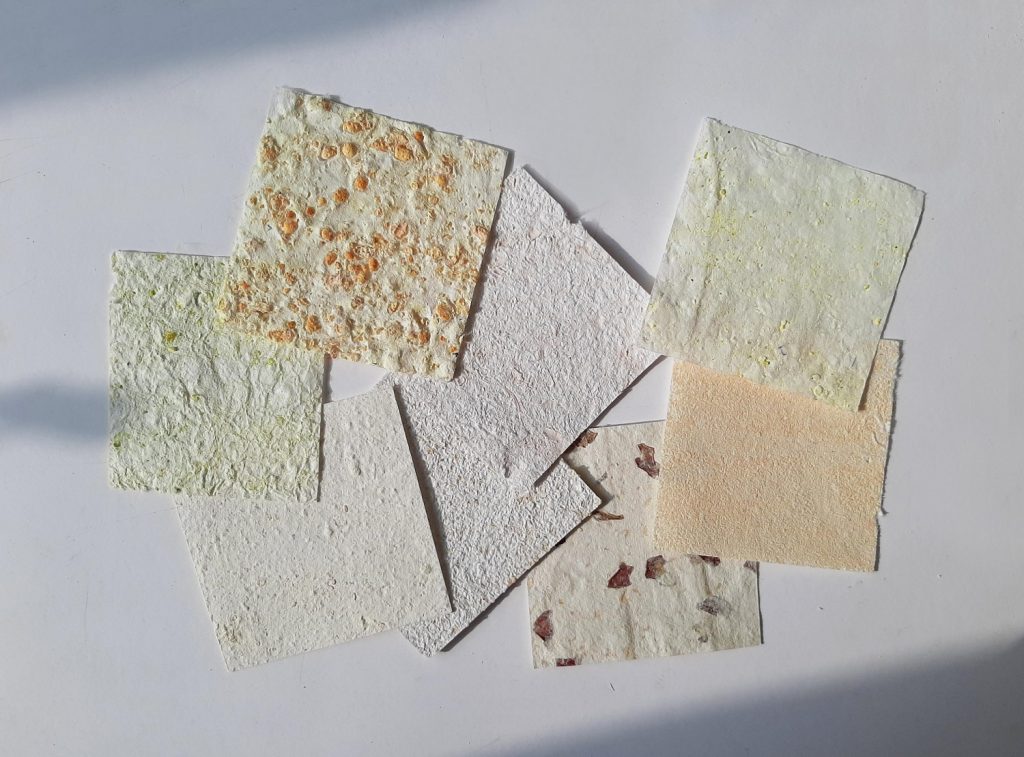
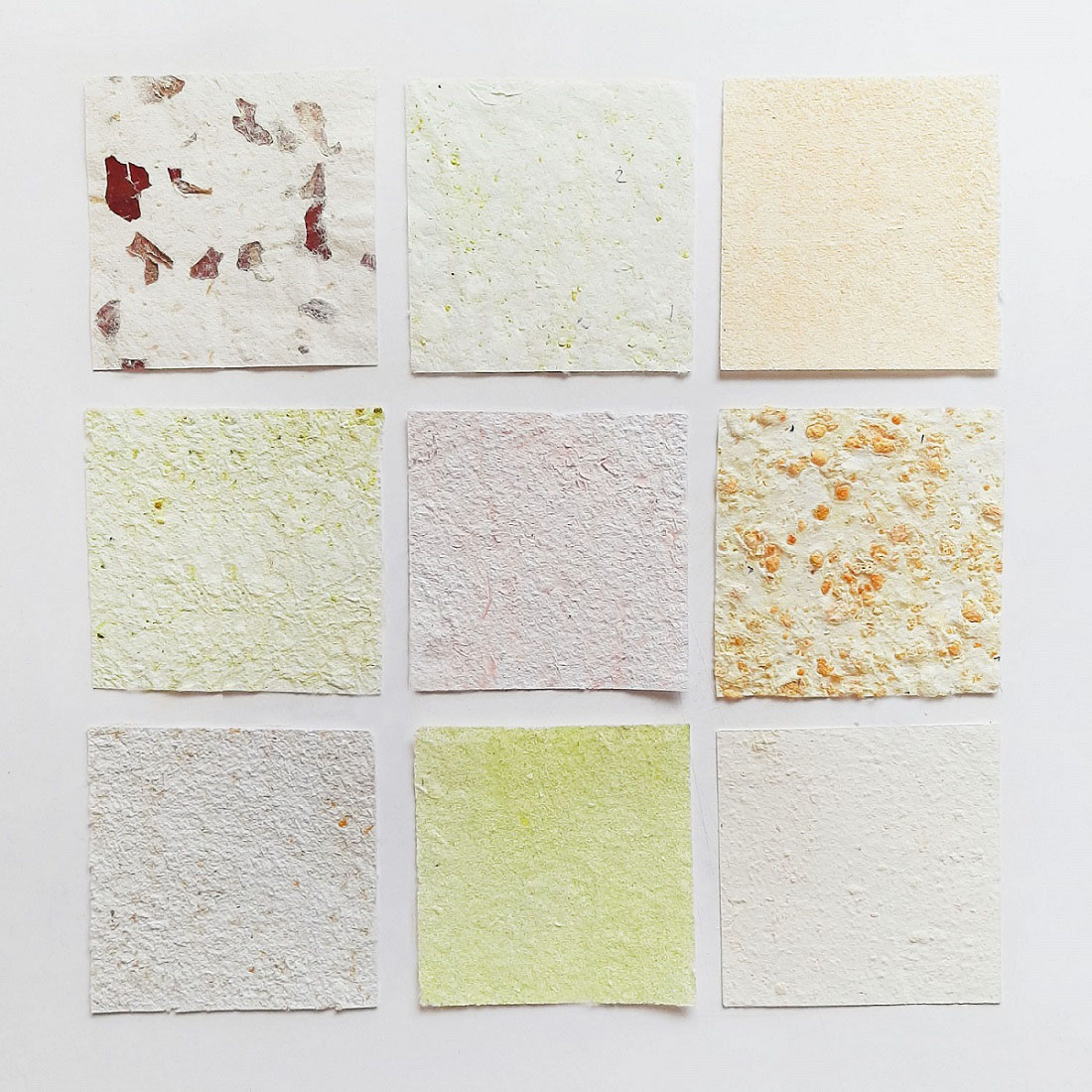
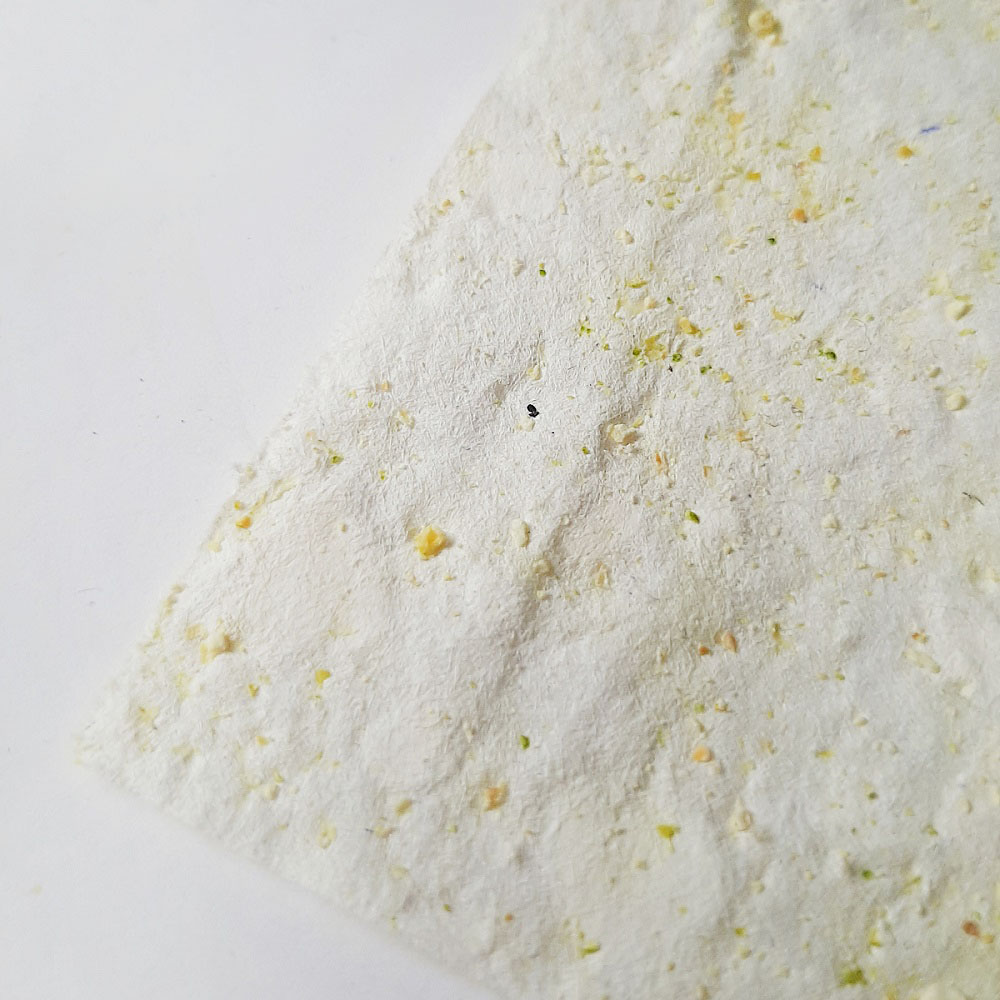

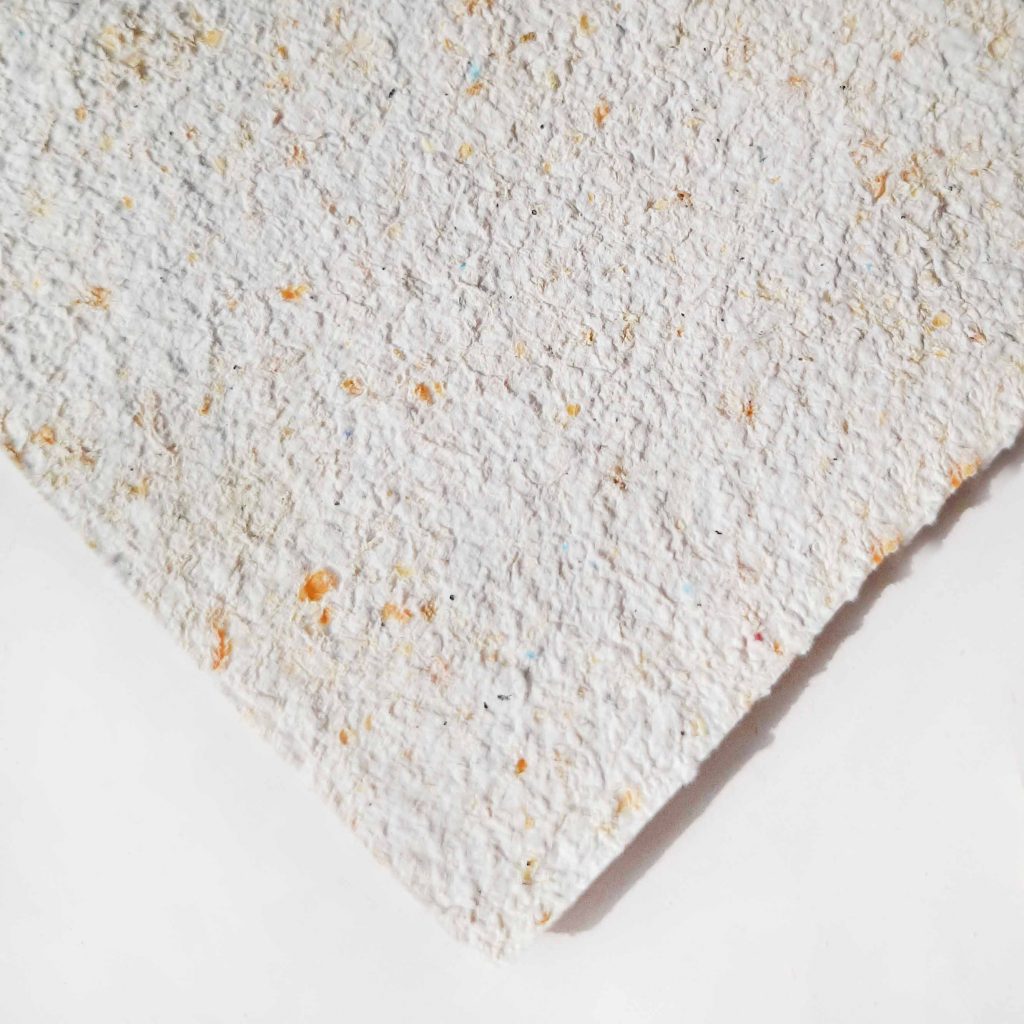
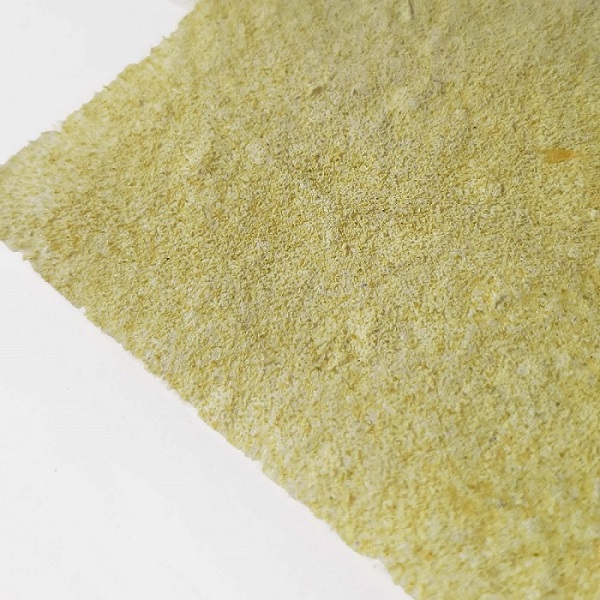
I became obsessed with the different textures of these papers. In our small peer engagement session, Soumya mentioned how these papers could be used as an educational tool for kids who don’t have the ability to see and learn about different types of fruits from only visual texts. Melanie also mentioned that I could use them for actually writing on them. I did think about writing small letters to all my friends before leaving Tehran. So maybe I will use these papers. Let’s see how that goes!
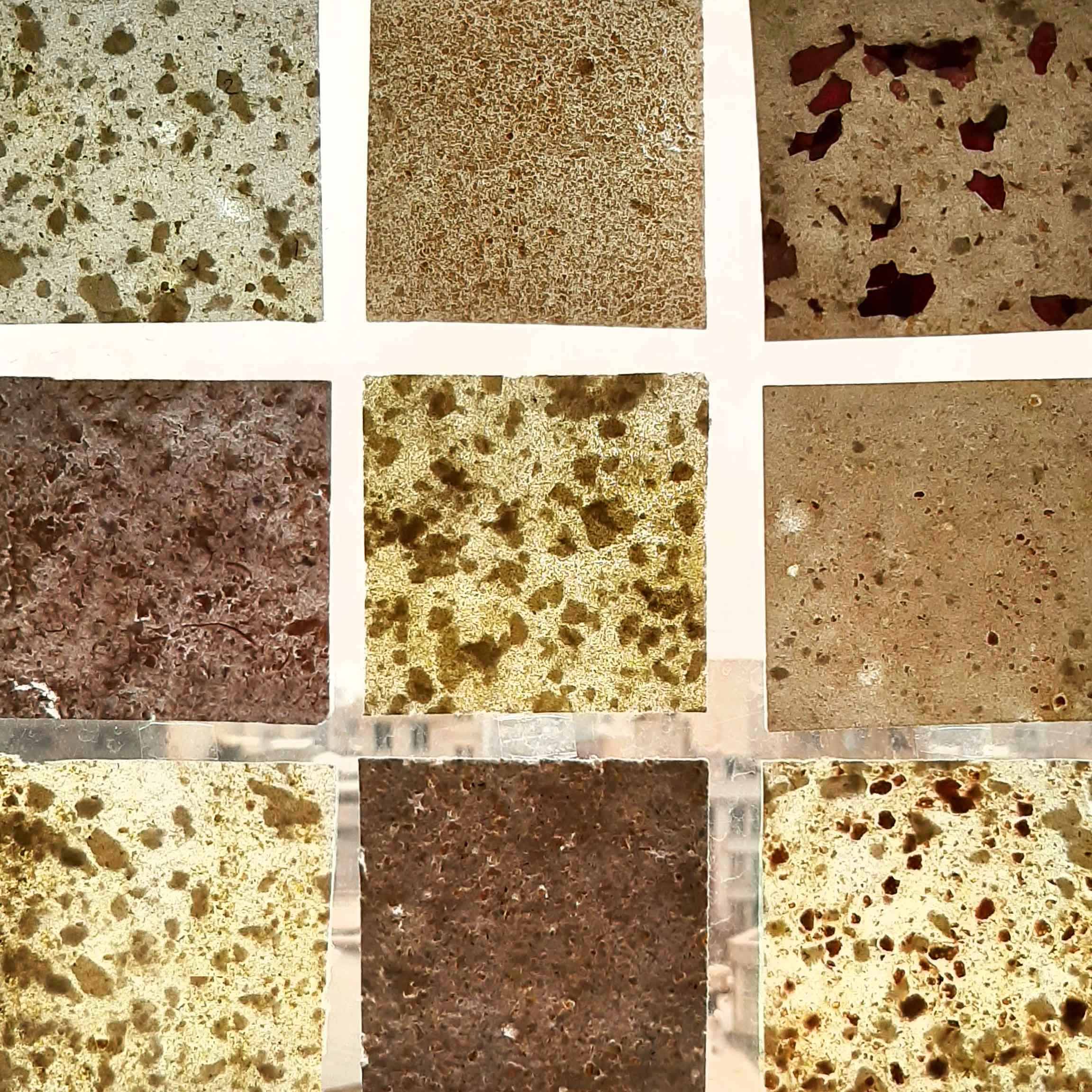
Action 10 | Grad Studio I
The idea of this was to investigate the interdependence and connections of our actions. I combined this action with the assignment of our research methods class, for which we had to visualize the practical/theoretical contexts of our initial research framework.
To view the map, See my MIRO BOARD

Action 9 | Grad Studio I
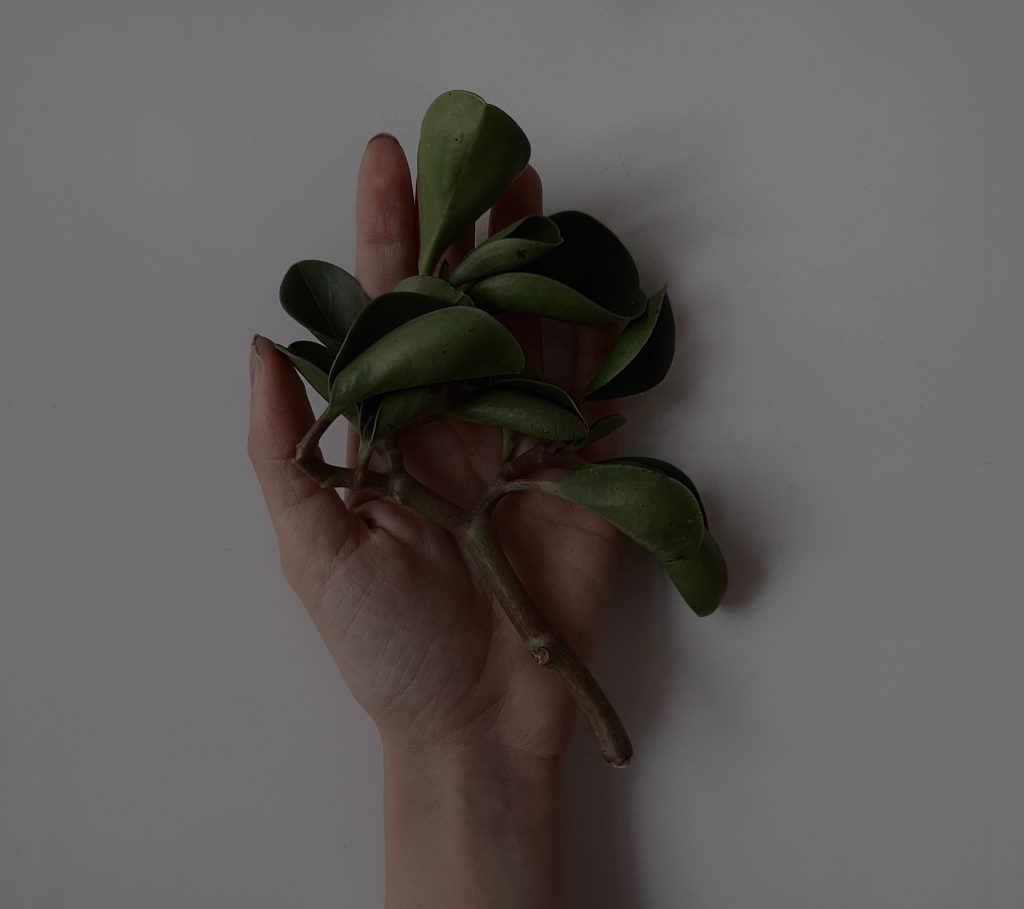
This action started when something on the news (or I’d better say something that should have been on the news) got my attention. Two weeks ago, one of Iran’s forests in the north of Iran (Our main green area) was burning in fire for ten straight days. What surprised me was the fact that I did not see any of our major news media and platforms cover this catastrophe and spread any awareness. I had to find out about this from a couple of my friend’s Instagram stories. This was shocking and, at the same time, not shocking as well. The topic of nature, conservation, and environmentalism in Iran has become quite political, especially in the last few years. Our news and media ignore the fact that we are on the brink of a crisis, and consequently, people are being kept in the dark about what actually is going on.
For the first part of the action, I wanted to investigate through our media and news sources to see how much environmental related topics matter to them. So, I went through their news feeds and tried to see even if they had dedicated a section to the environment or not, and if they had, what was the priority of that section in their feed. I also bought a couple of actual newspapers to help me if I wanted to create something more tangible.
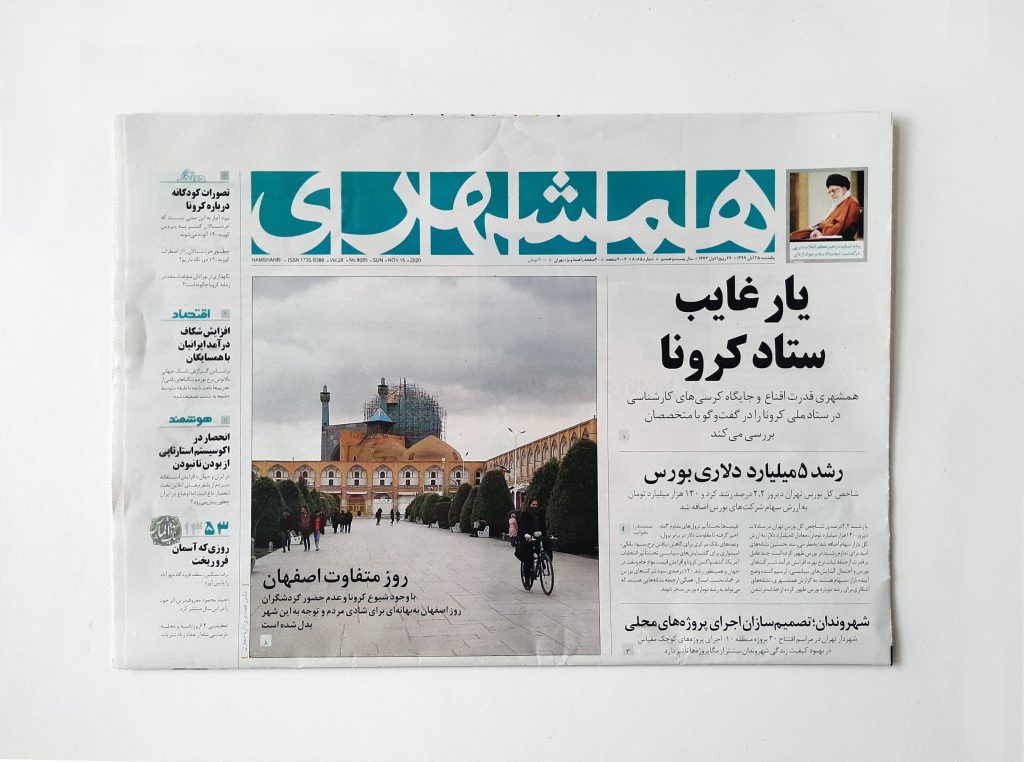
When I was going through the newspaper headlines trying to find environmental-related topics, I decided to cut out the headlines of each section and then sorted them according to the number of the page in the newspaper. I wanted to do this to see where did environmental topics fell in this hierarchy.
As I sorted out the headlines, I thought about how we prioritize our news and how do we assign value to the stories around us. How much do we value stories about nature?
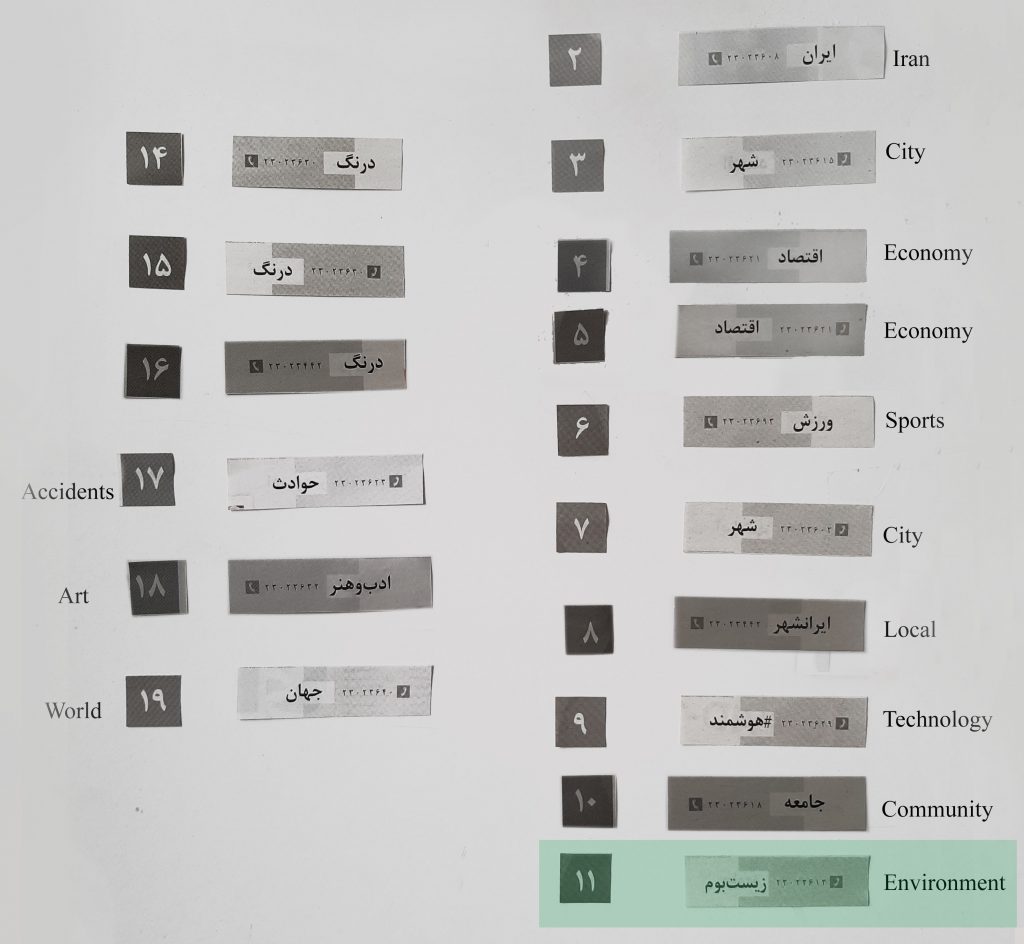
Talking about the environment has been under scrutiny for sure. Environmental activism has become a political topic to some extent in many parts of the world. But what happens when we politicize nature? When we don’t allow for nature’s stories to be seen and shared. Does nature even have a voice?
Part of the reason why nature has become so highly political is the fact that nature is inherently unifying. If you bring up any topic here, people divide over it and take sides. But protecting our natural resources is something that can unite people. That’s very powerful. And also very scary for governments.
But can we make this fight political? I honestly don’t think so. If our natural resources have a chance at surviving, we should not make environmentalism a political matter.
As I was playing around with my cut-out news headlines, I started changing the hierarchy of them. News about the environment and our natural resources should not be buried at the end, where no one cares to look. We should treat this issue more significantly. People should be more aware of what is happening. Especially in a desert-climate country like Iran, our very few forests and green areas are what make living possible here. Changing our priorities is a must.
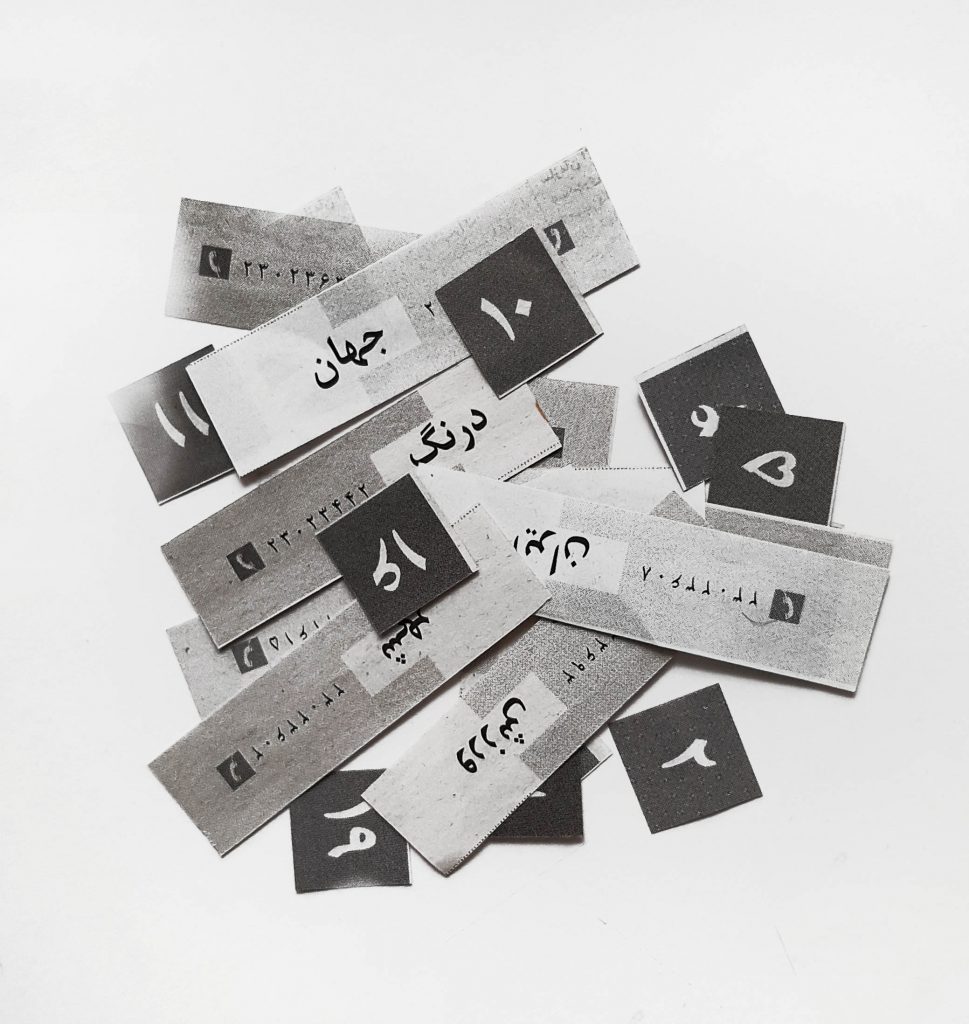
For this part of the action, I cut out the main headline and picture of the newspaper I had, which was about corona (don’t get me wrong, this is still an important topic). Then I decided to create my headlines, with the environmental-related stories that I thought deserved to take up larger space.
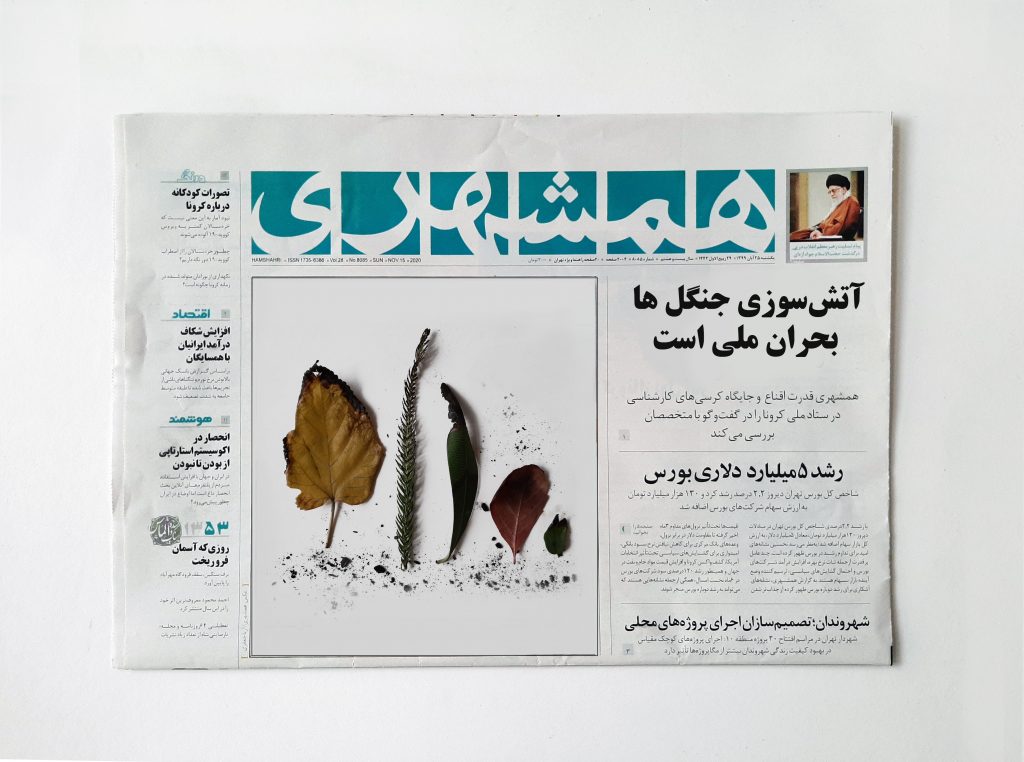

As I was reflecting on my actions, I decided to look up the data related to forest fires in Iran and try to at least raise my awareness on this subject. Unsurprisingly, it was difficult to find any concrete and accurate data on this topic. I dug dip and went through a couple of databases to get as much information as I could. My idea was to create an infographic that shows the number of forest-fires we have had during the last couple of years. It’s worth mentioning that the infographic I created is probably not an accurate reference to use. I am sure the extent of the problem is worse than what is presented in this data-viz.
For this part, I made a chart showing the 365 days of the year, and I put a green leaf for all the days of the year. Then I replaced that leaf with the outline of one to represent the days in which we had a fire and parts of our forests were destroyed. Then I went on and wrote the details of that fire (when/where/how) in the outlined leaf.
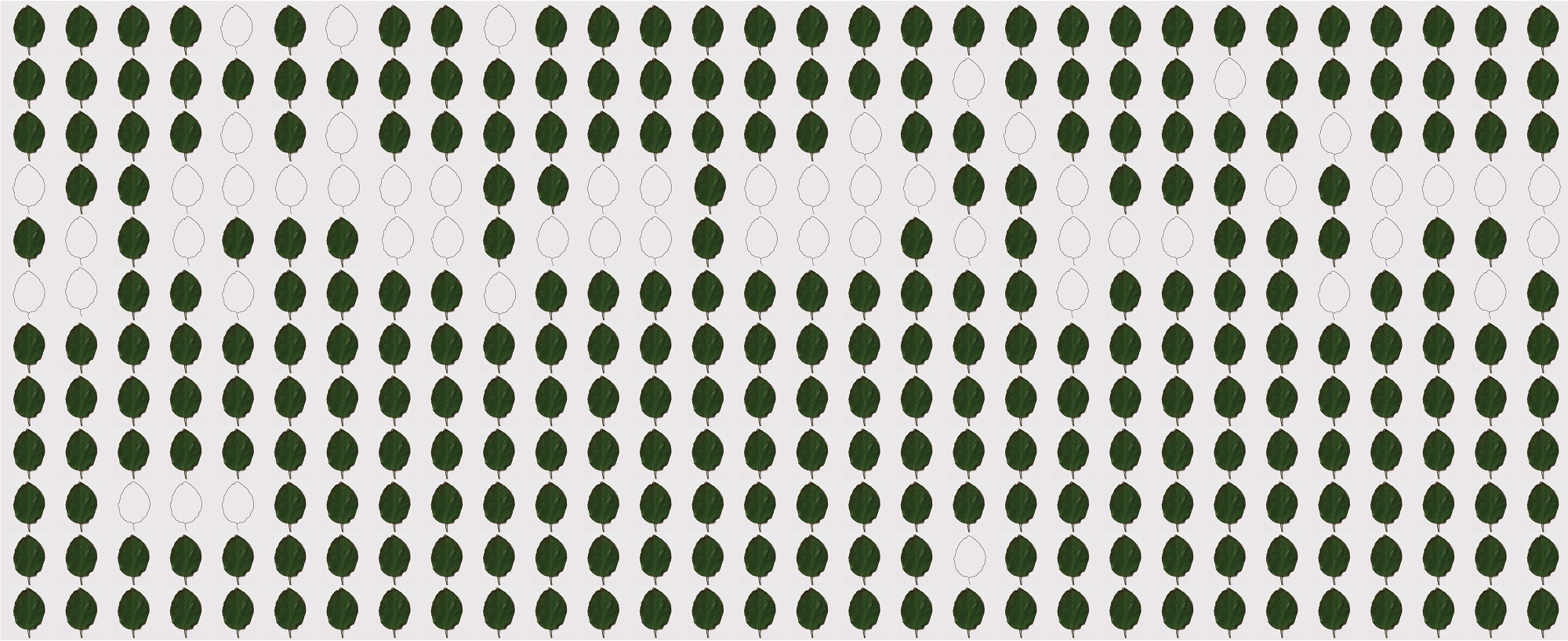
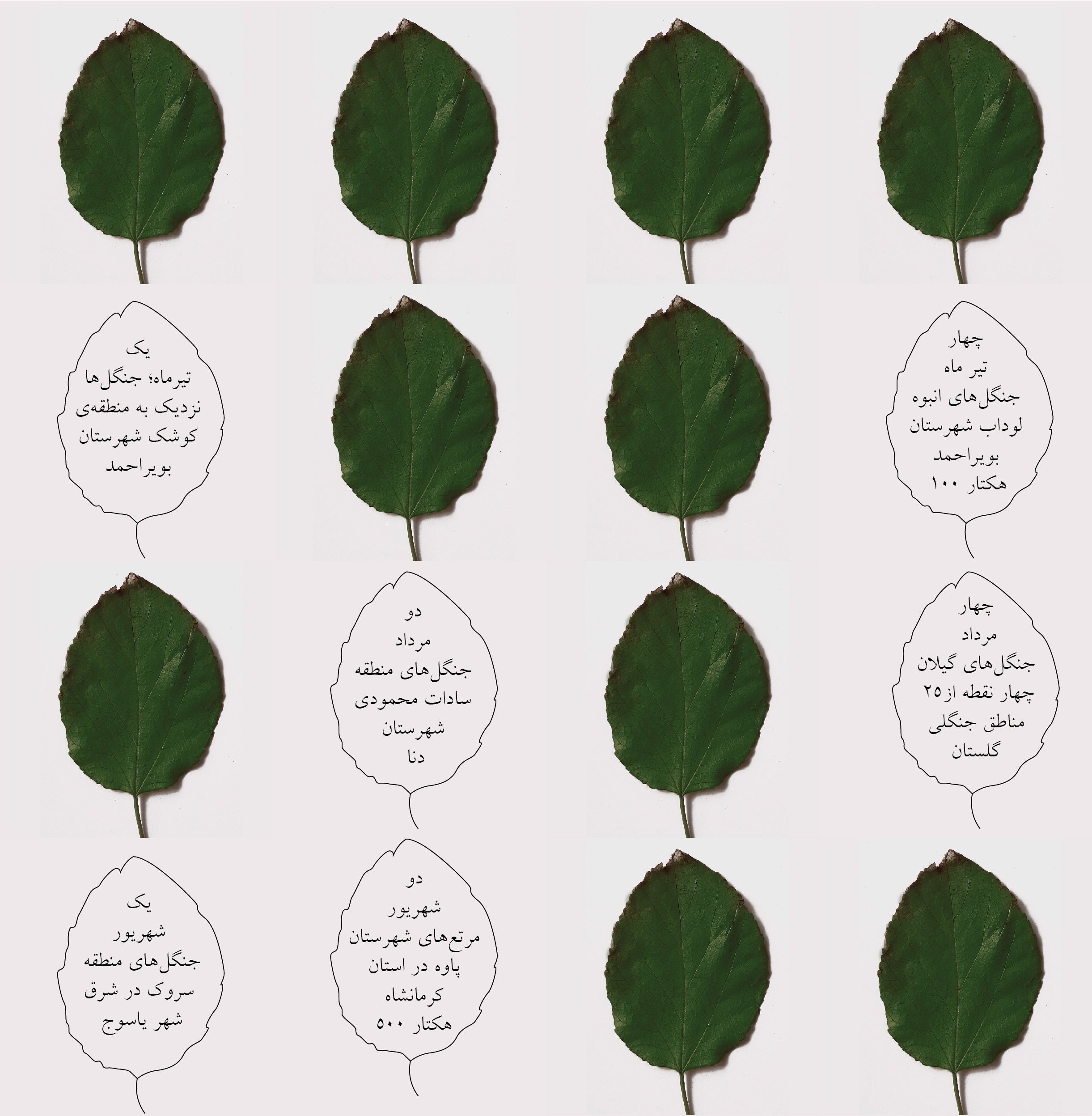

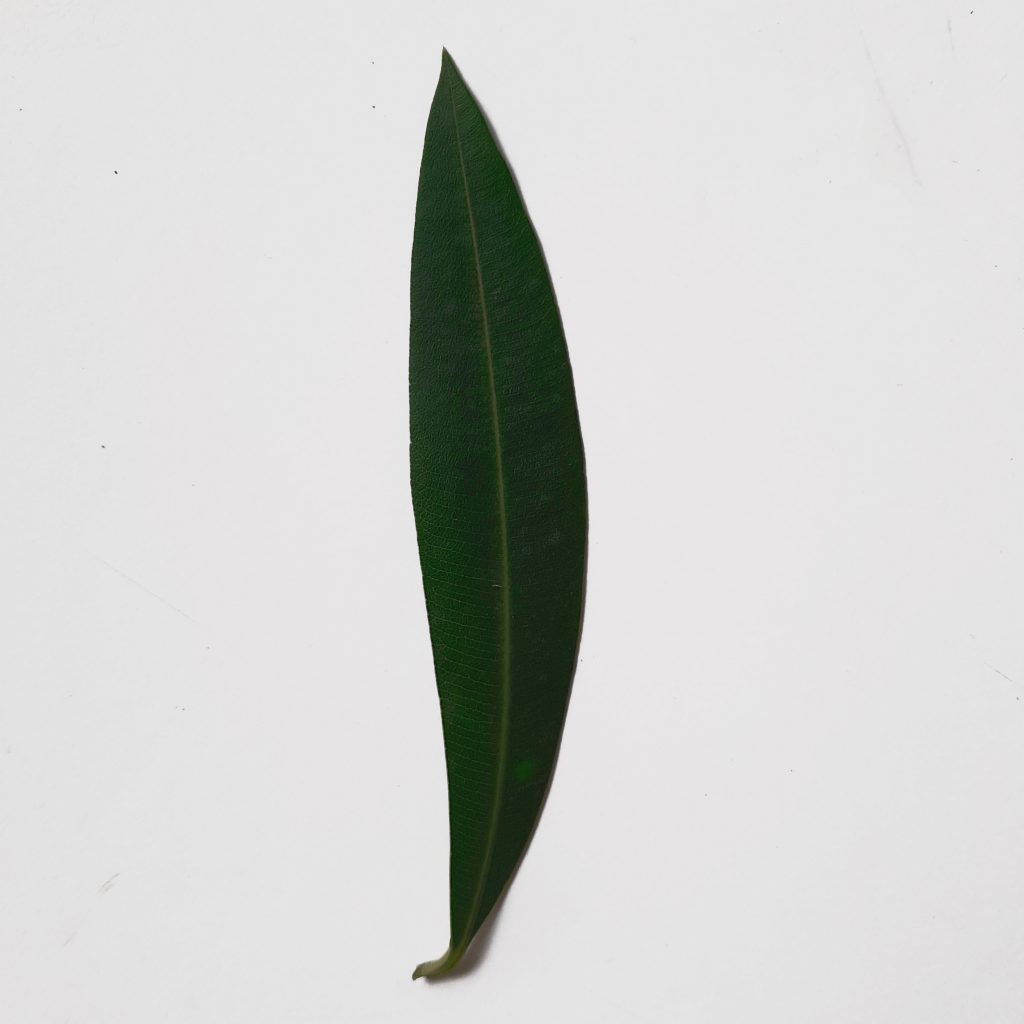
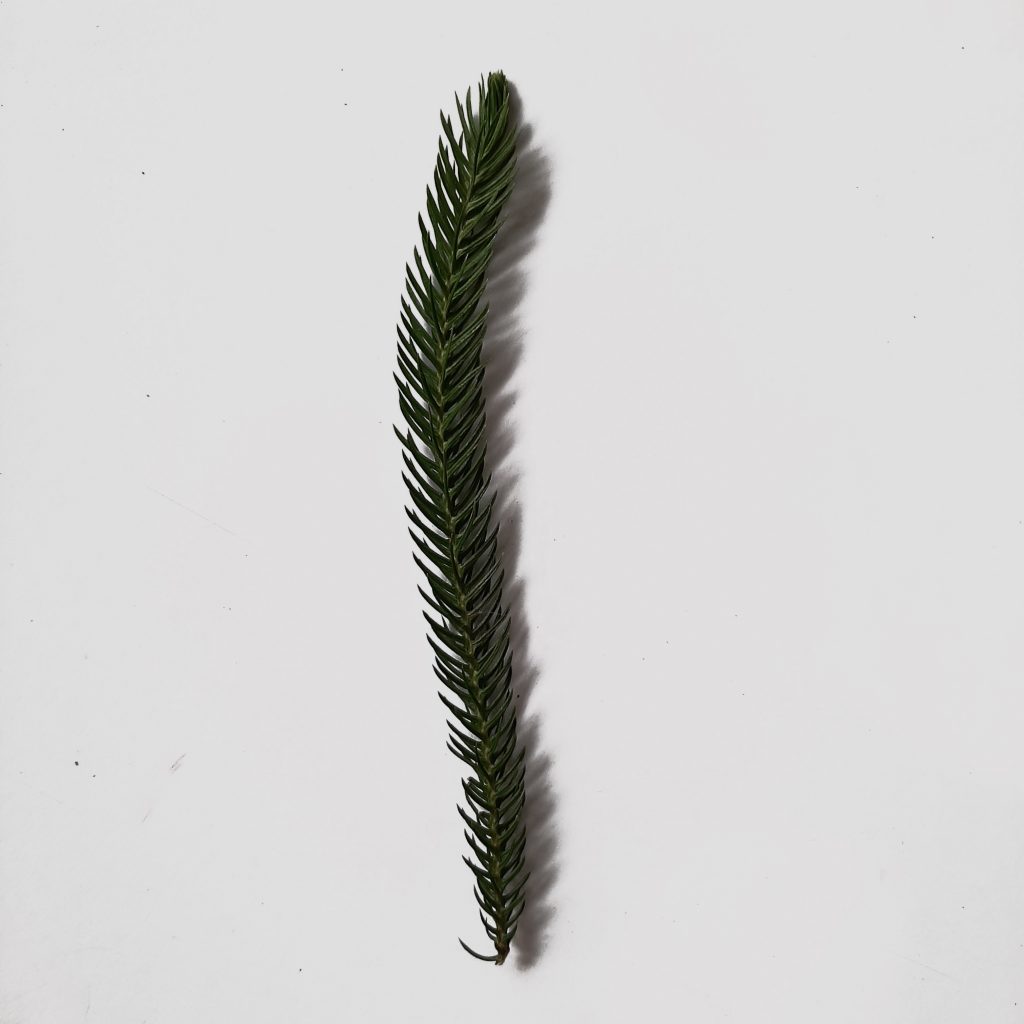
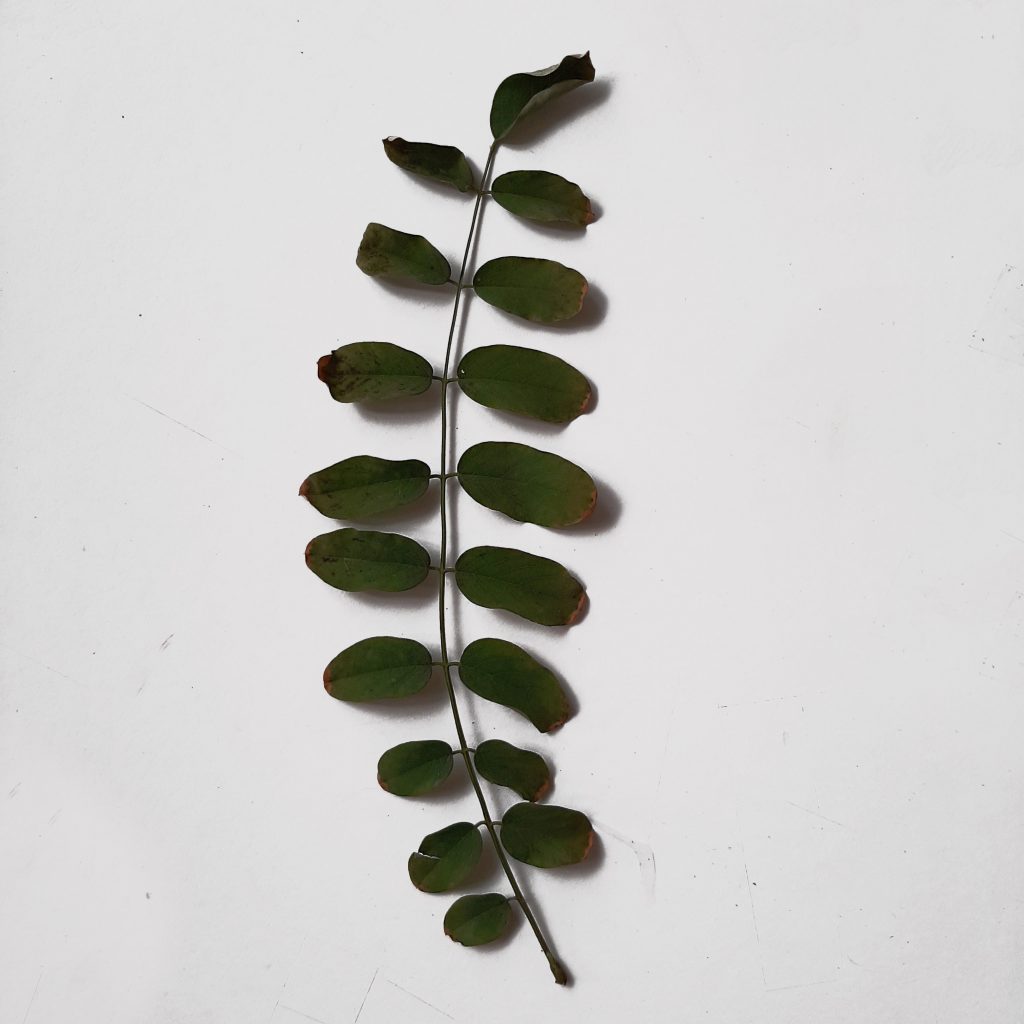
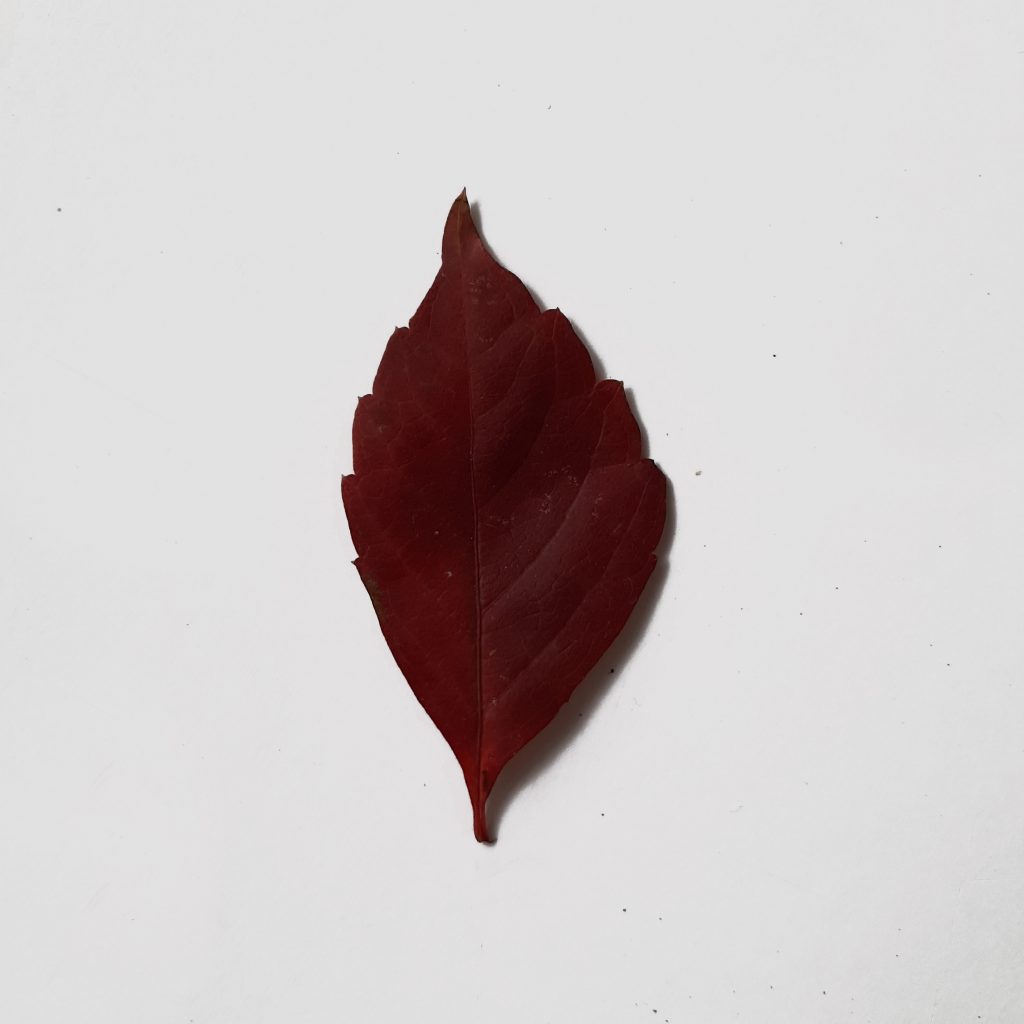
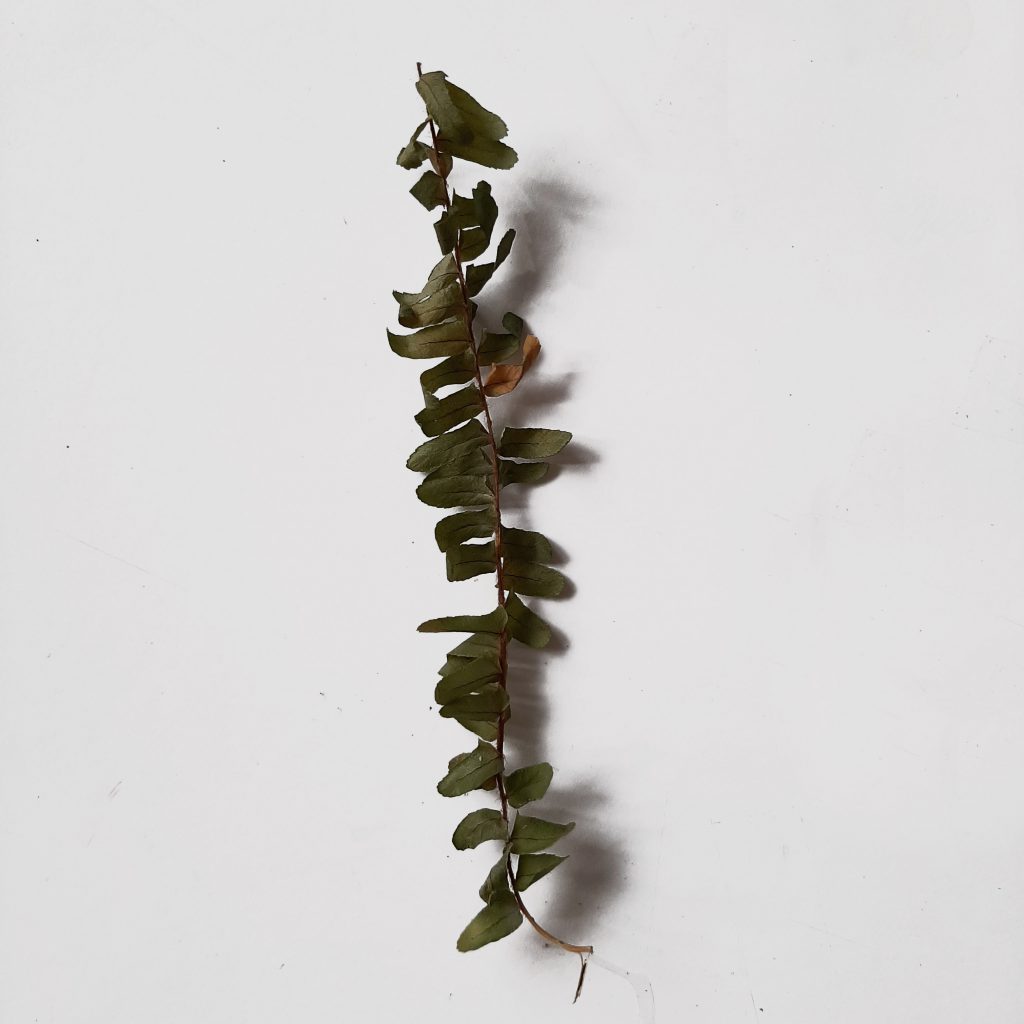
1- Is everything inevitably political?
I was thinking a lot about this during this action. Because being born and raised in a country where every aspect of my life is highly politicized, I wanted to stay away from politics in my work. I wanted to keep my creative work a safe space for myself that did not involve political talks. But Is that really possible? When everything around us is inevitably political, is art/design exempt?
2- Why is nature political?
Nature is political in many aspects. During my peer engagement, some aspects of this topic were discussed that I think are worth mentioning briefly here. First of all, it’s the privilege of access to nature. Who has access, and who doesn’t? Also, as Louise mentioned, our wealth and our economies are based on the exploitation of the earth’s resources. But can this remain a political agenda?
3- The importance of awareness:
If no one talks about it, then how can we stop it? This question was repeatedly going on in my head while working on this action. If we are not told about the severity of our environmental crisis, then how can we make sure we combat it? The lack of data revolving around these topics is a significant issue and one that needs to be addressed. How? I am not sure about it. It is obliviously tricky to gather and present correct and accurate data surrounding topics that are considered political.
4- What to do next?
At the end of this action, I felt a bit powerless. I thought there is nothing I could do to help with the situation. Who is going to see these headlines I created? Who is going to pay attention to the staggering number of forest fires we had last year (56 days)? When I created the infographics, I mainly did it to raise awareness for myself and to educated myself on this topic that is being neglected by major news sources. So maybe educating myself is a start?
Action 8 | Grad Studio I

After action 7, I continued my knitting, mainly during the five days of waiting for the election results in the united states, as I was sitting in front of the news anxiously following updates on numbers. Needless to say, this brought a lot of comfort and calmness to those anxiety-filled days and also allowed me to become more familiar with the process and the medium itself.I bought another color of yarn and tried to incorporate that into my already knitted fabric.
As I was learning the more complicated patterns from my mom, I started to write down the instruction to be able to follow along later. As I was doing this, I thought about actually creating a small archive for myself to preserve this knowledge that has been passed on from my grandma to my mom and then me.
After I wrote down most of the pattern instructions, I instantly thought about transferring this data into the digital medium to ensure its preservation. Also, while I was writing the instructions down on paper, I was creating minimal symbols for every stitch to help me remember them later on, as opposed to writing every word down. So, when I sat behind my computer to create my digital archive, I set out to create a very simple set of icons as well, to represent different types of stitches.
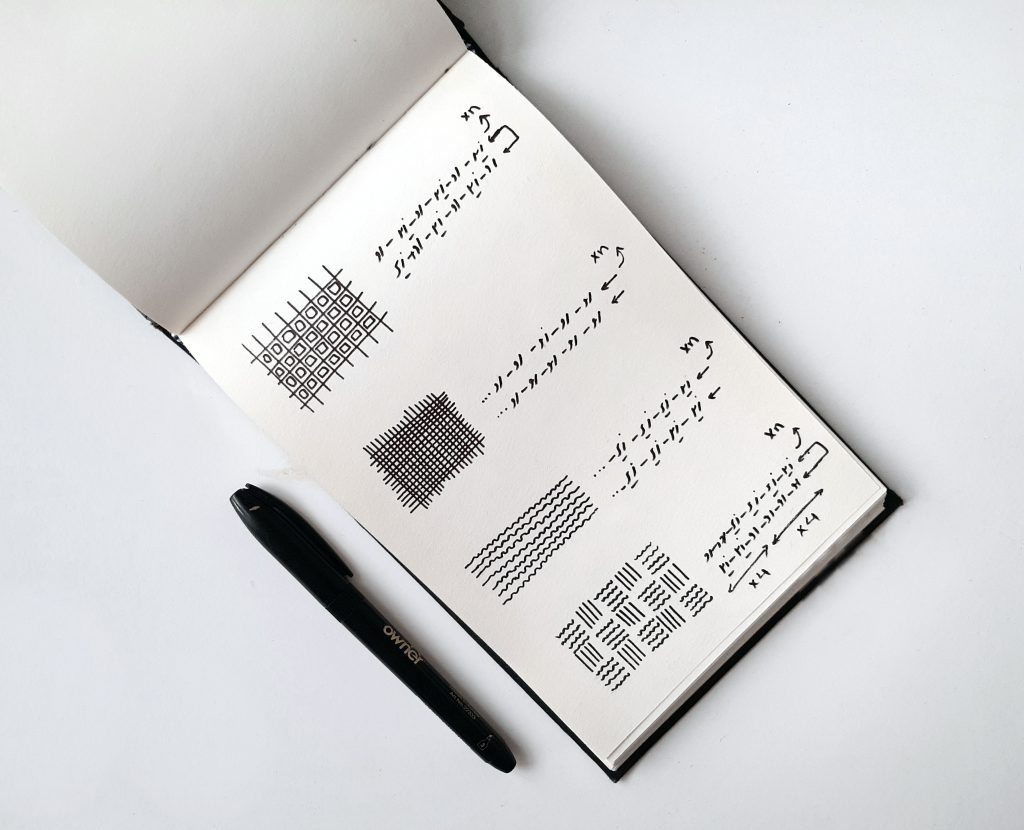
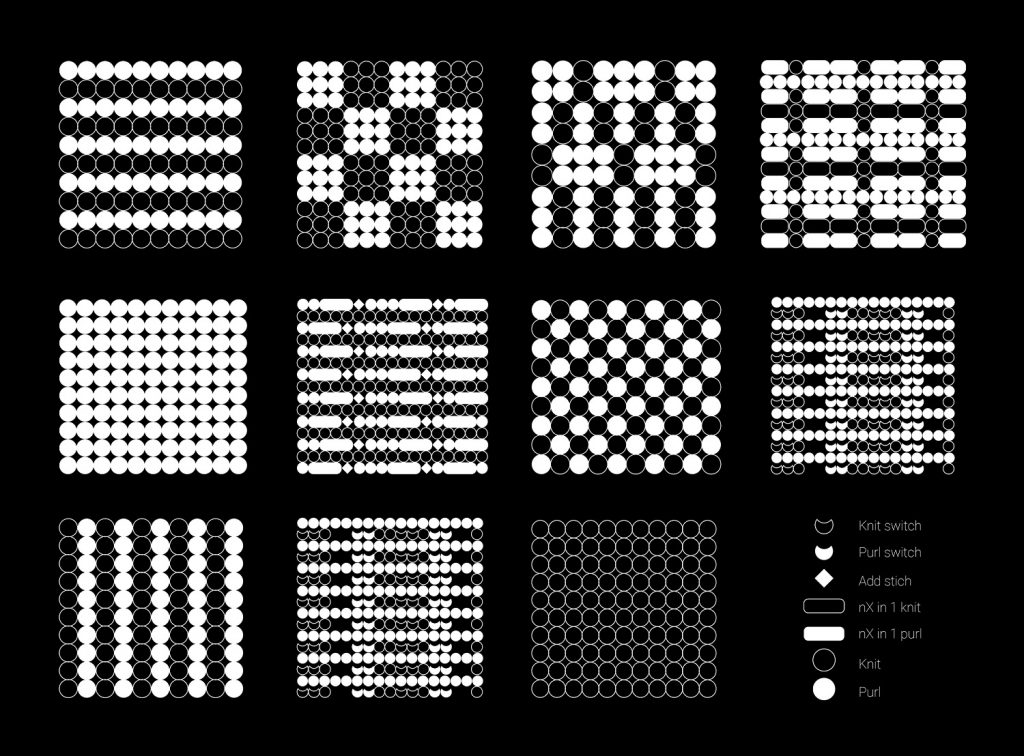
These patterns represent a very small part of a vast knowledge that is close to becoming forgotten. I thought about many more areas of forgotten knowledge that we have not bothered to preserve in the modern world. How can we document, save, and pass on these forms of knowledge? Is bringing them to the digital medium a better way of preservation than the physical?
Digital archiving increases the accessibility of data but can the digital, preserve the true value of knowledge that is mainly tactile and tangible? On the other hand, the digital always relies on a medium itself.
Digital Vs. Physical data? Which can ensure the longevity of its content better?
After creating these initial sketches, I realized I was able to understand the structure of the patterns behind knitting stitches better this way. I appreciated the complexity of this craft more now. Also, I realized that I could play around with these patterns as a visual experiment to see what other forms I can create. So with that, I started working on my second set of digital sketches.
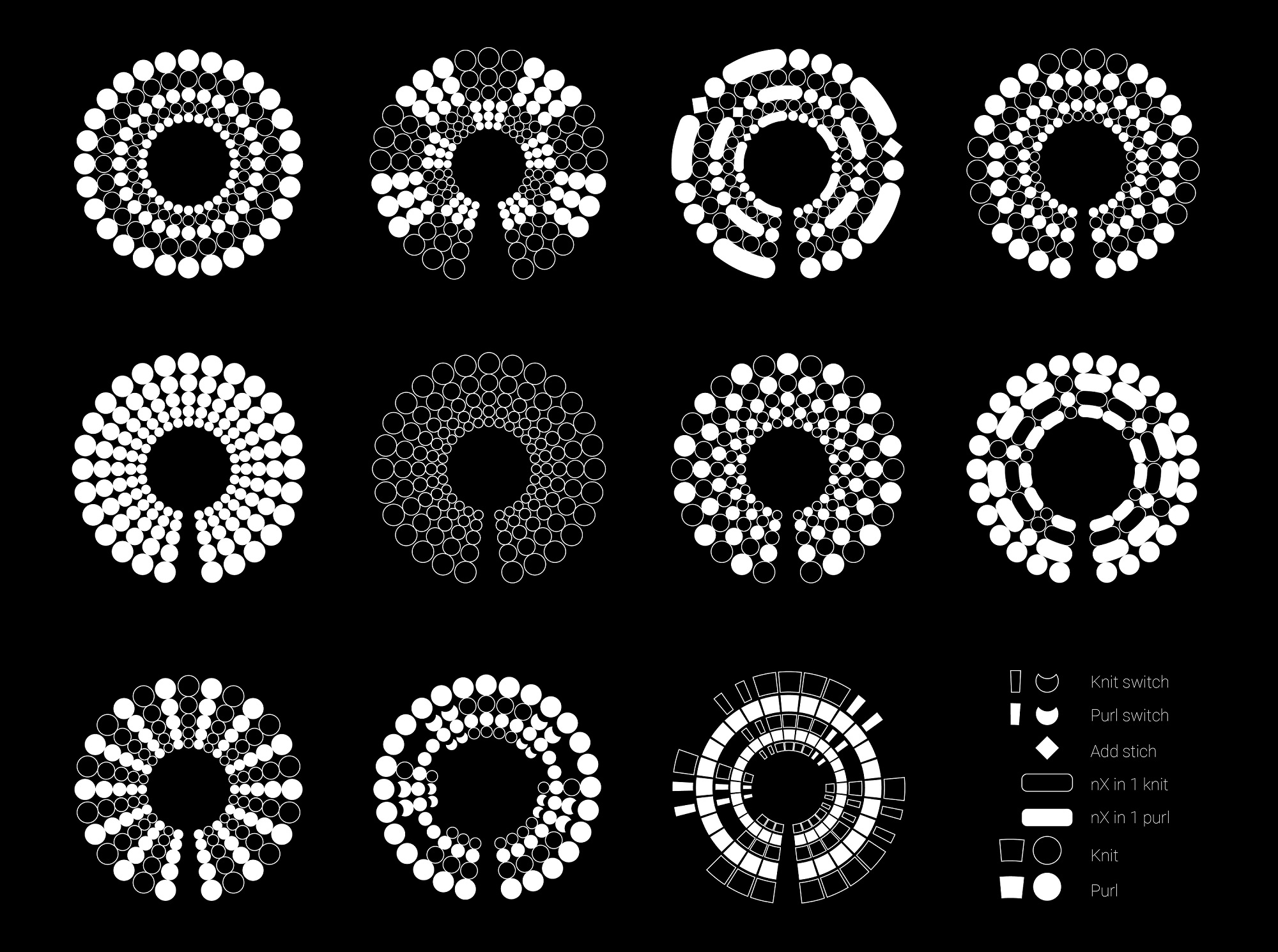
As I was creating these visuals, I was thinking and reflecting on what they mean. They were aesthetically interesting, but what else did they convey? The first thought I had was how decoding the patterns and instructions of an old and devalued form of making and translating it to a modern medium (that people are more familiar with) has revealed the hidden and intricate structures of it. Changing the medium of knitting from tactile to visual had somehow given another dimension to this craft. But when we change a work’s medium, does it necessarily retain its essence? Or does it take its own form and meaning?
I was very much enjoying the process of creating these visuals since the digital screen was and maybe still is my comfort zone of making. I realized that the second set of patterns I created were not exactly easy to follow. I could follow them, but I was not sure someone unfamiliar with this medium of work would be able to. My first set of instructions did that job better.
For the third experiment, I started to create something a bit more abstract and less of an actual guide (although I did not intend on creating user-friendly guides for knitting in the first place). This time, I wanted to focus on creating with as little forms and shapes as possible. But still making sure the patterns followed the pattern of the knitting stitches. Here is the third visual outcome:
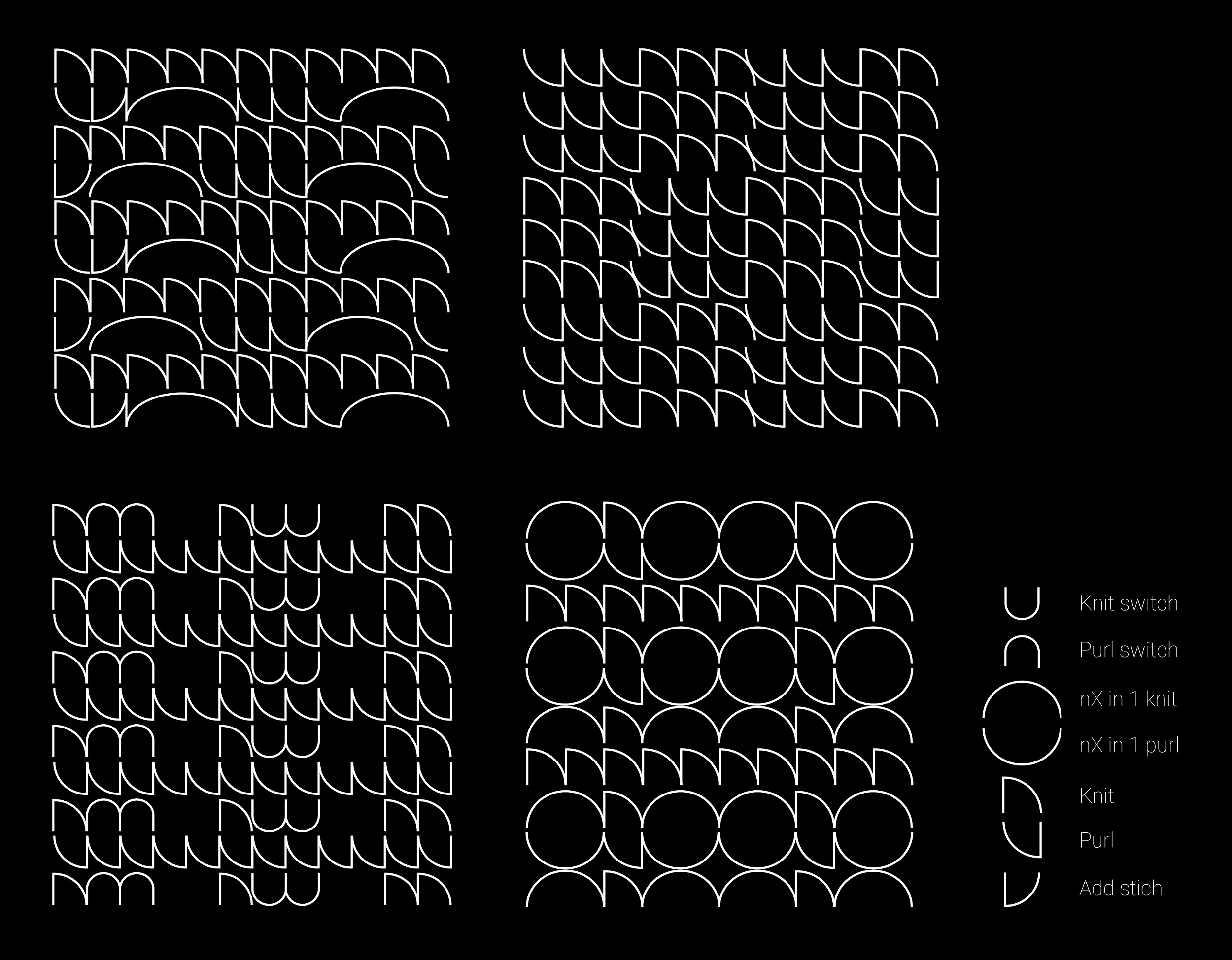
1- Documenting forgotten knowledge:
Knitting is a small part of our traditional and cultural knowledge. A knowledge that newer generations like me (who grew up with technology) are becoming increasingly unfamiliar with. As a result, generation by generation, we are losing parts of this knowledge. We talk about preservation, but what is the best way to preserve this form of knowledge? to ensure its right documentation, accessibility, the integrity of its content, and many more aspects.
2- The Digital Dilemma:
Data exists in many shapes and forms: from tangible materials to electronic information. In today’s digital world, many people gravitate towards the digital because of easier and faster access. But when we bring something from the physical medium to the digital, we can not ensure that the values of its original form are preserved. This is especially tricky when it comes to works of art/design. Can the digital medium preserve the true value of physical data?
3- The digital dimension of knitting:
Knitting is mainly viewed as a hobby rather than a creative medium of art. By decoding knitting patterns and bringing them into a more “modern medium”, I actually could understand the complexity of it better. This ancient craft that we all associate with our grandmothers has a complicated and technical structure behind it. How could we use this form of knowledge in our designs?
P.S. Special thanks to Zahra for helping me articulate my entangled thoughts for this action!
Action 7 | Grad Studio I
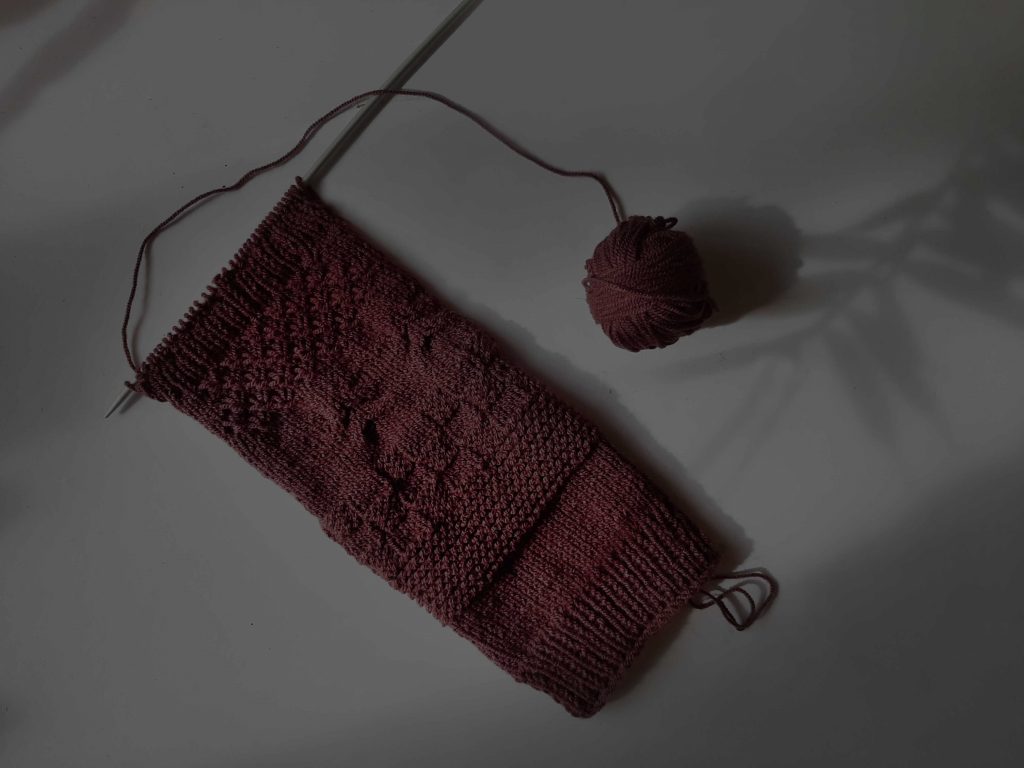
After I finished my action 6, I started thinking about my reflections. I had some ideas on how to direct my practice towards the next action, and one thing all my ideas had in common was exploring the intersection of materiality(physical) and the invisible (the digital). After my 1:1 session with Zach, however, this idea shifted a bit. He suggested that I pause here and go back to craft instead.
As I was thinking about crafts, a group of my friends was setting a long-overdue reunion to meet up after months of lockdown. During the chats in our virtual group, one of my friends, who is a very skilled knitter(Arghavan, let’s call her A), was joking about how she wants to bring her knitting with herself to the gathering and continue it there. In this ‘joke’ I realized was a potential for a co-creation session! So I asked the other two to also bring the tools for any type of craft work they wanted to do in this session
On the day of the gathering, I packed my knitting needles and yarn and went to my friend’s house (we met up on the roof #covidtimes!). After a long catch-up, I told my friends to start their crafting process. At first, I wanted to give them a cue on what to create, but I decided to let them wing it.
Arghavan started to remind me of the basics of knitting. I had learned knitting from my mom when I was a kid. Throughout the years, I forgot most of the techniques, but as she started explaining, It all started coming back to me. In no time, I started knitting on my own without her help.
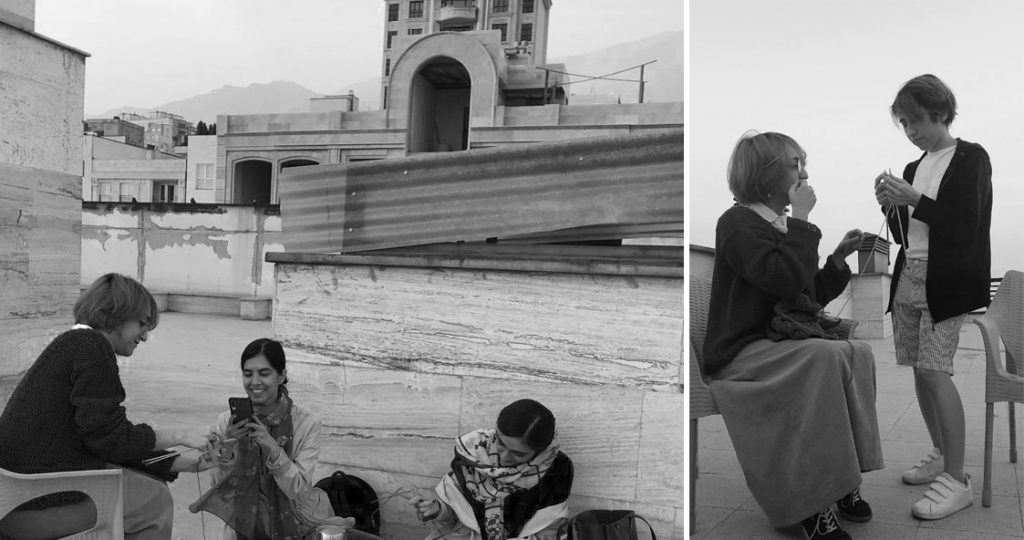
As we were doing this co-creation, I realized that virtually all the people I know who have craftwork skills such as knitting, sewing, and textiles are female. I don’t even know a single male who has ever expressed interest in learning knitting or quilting. Technically, crafting means creating and making with your hands, but traditionally some forms of craft have been gendered female. The exceptions of women in craft are vastly different than men. Unsrpisrisngly, the “male” crafts such as woodworking and metalsmithing have become artistic and designerly ways of making in the modern world. On the other hand, “female crafts” such as textile, quilting, and embroidery, have been reduced to just a hobby. This is part of a larger issue that centers on gender and artistic mediums.
Anni Albers was a German-American textile artist and printmaker whose work stood on the lines between traditional craft and art. She worked at Bauhaus alongside famous artists of the time like Paul Klee and Kandinsky, yet I never heard of her in my four years of design education. Her contributions to modern art were marginalized not only because she was a female artist but also because she had chosen an unconventional medium that was seen as a second-class medium.
“There’s one piece of hers, a very fragile silk weaving, that she described as one of her masterpieces,” says Ann Coxon, curator of international art at Tate Modern.
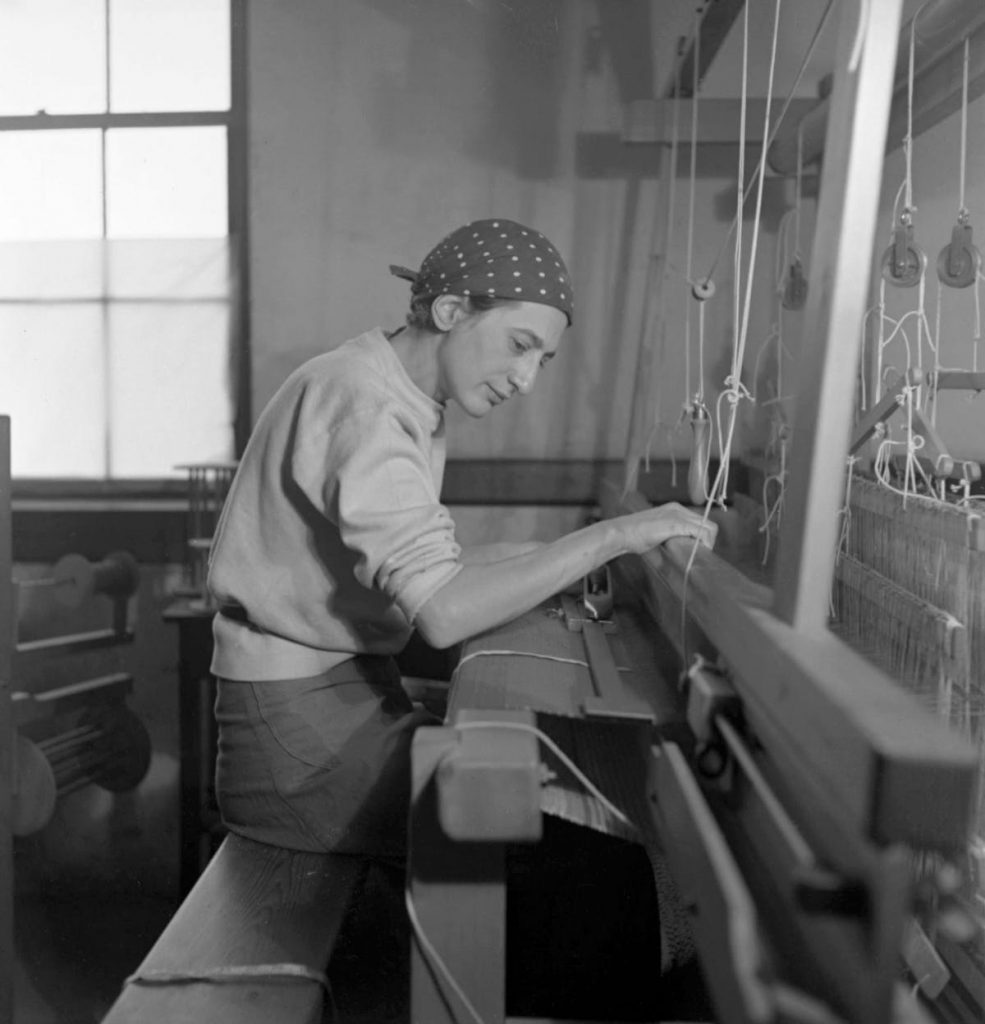
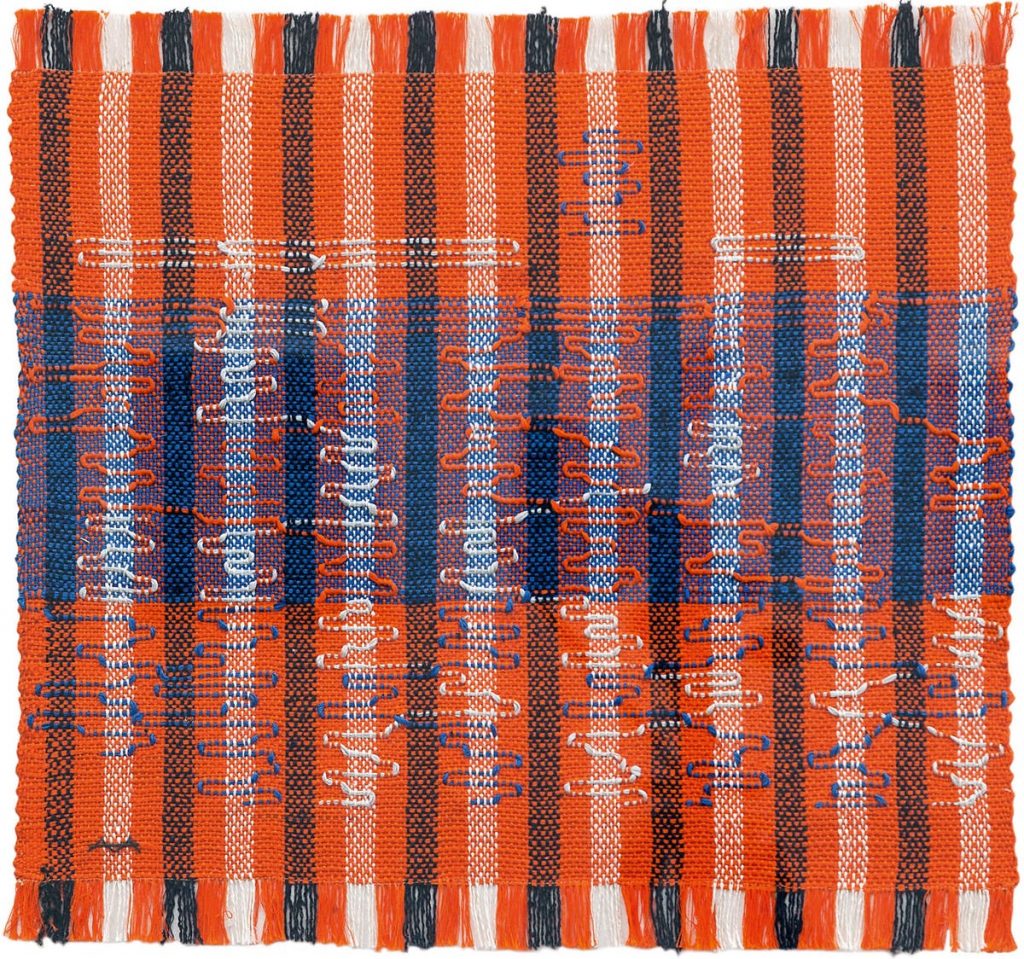
While observing this co-creation session on the roof with my friends, something was quite clear. Knitting was a complex form of making; Using a non-elastic and one-dimensional thread to create an elastic three-dimensional work. Even the simple techniques took focus, effort, and skill. It is far more than following a simple pattern. It is both a technical and creative skill.

I asked everybody to tell me what craftwork meant to them, what’s their relationship with it, and what do they care about when crafting.
1- Craftwork is a mode of:
Z: Meditation, Creative expression
A: Meditation, transforming anxiety into a creative piece of work, and owning something that completely fits my style
H: Creativity, and being expressive, Care
K: Creative process, Nostalgia, Storytelling
2- What do you care about when crafting?
Z: Aesthetics (color + pattern), memories and moments while making the craft, physical touch
A: The process, Concentrating on breath and movements
H: The process, and also the final result, how it looks and what it expresses.
K: The feel of the material, Freeing sensation
3- What’s your story with craft? (Read the full stories here)
Z: “… Craft for me is a safe space that I can immerse myself into without stressing out about the possible result or the process”.
A: “… my mind goes unburdened from daily tasks when my hands are busy with a rather difficult pattern and I start concentrating more on my breath and my movements.”
H: “… Being a kid I’ve always loved to make crafts for myself and people around me, and I think that was a way of expressing my feelings.”
K: “In a high-paced life, craft slows things down, brings awareness, and lets me explore making through a calm process.”
1- In the era of digitalization, people’s sense of materiality is being jeopardized. We are relying mostly on vision and sound, without making full use of touch. Even the physical products around us mostly have flat, clean, and smooth surfaces. Craft informs our relationship with materials and is part of the answer to our quest of seeking tangible and real materials.
2- Craft is an experience of intuition, trial & error, and embodied knowledge. Craft makes us physically aware, it makes us concentrate and lets us explore making and playing with the materials through our hands. Even though it’s complicated in patterns, once you master a skill, you can hardly forget it.
3- Craft ties us to our history. Craft is a data storage of stories, traditions, and knowledge. For many, this knowledge was passed on from generation to generation.
4- Craft is a tactile process. No matter the outcome, one thing that was clear through our talks was how everyone valued the process of craft more than its actual results. Craft is a language of material and making.
When I got back home, I showed my mom the knitting and asked her to teach me a few more patterns. As she was going through the different patterns, It made me think about the similarities between coding and knitting; they both have inputs, outputs, and loops. Similar to code, knitting is both technical and creative.
